The Anja Reserve is the result of a project initiated in 2001. On the one hand, this is a project which is very significant for the local community since it is managed by the community and on the other hand it is probably even more important for ring-tail lemurs which are called maky in Malagasy. At some point in time it was established that 95% of the maky population on Madagascar were exterminated (they were either used for human consumption or as a part of the international trade with exotic pets). Since some specimens of this species had already lived in the nearby forest, the local residents came up with an idea, starting this project with international assistance and nowadays this is the place with the highest concentration of ring-tail lemurs in the world. It is estimated that there are around 300 of them in the reserve and the programmes for the visits to the reserve also include entering the forest in order to see the lemurs which are well accustomed to the human presence by now and therefore this is not that difficult. Also, there are visit programmes that involve proper hiking and climbing to the nearby massif called the Three Sisters. We did a medium tour and in the end we were exceptionally content with the visit.
But, it all started by seeing some animals that were not lemurs.
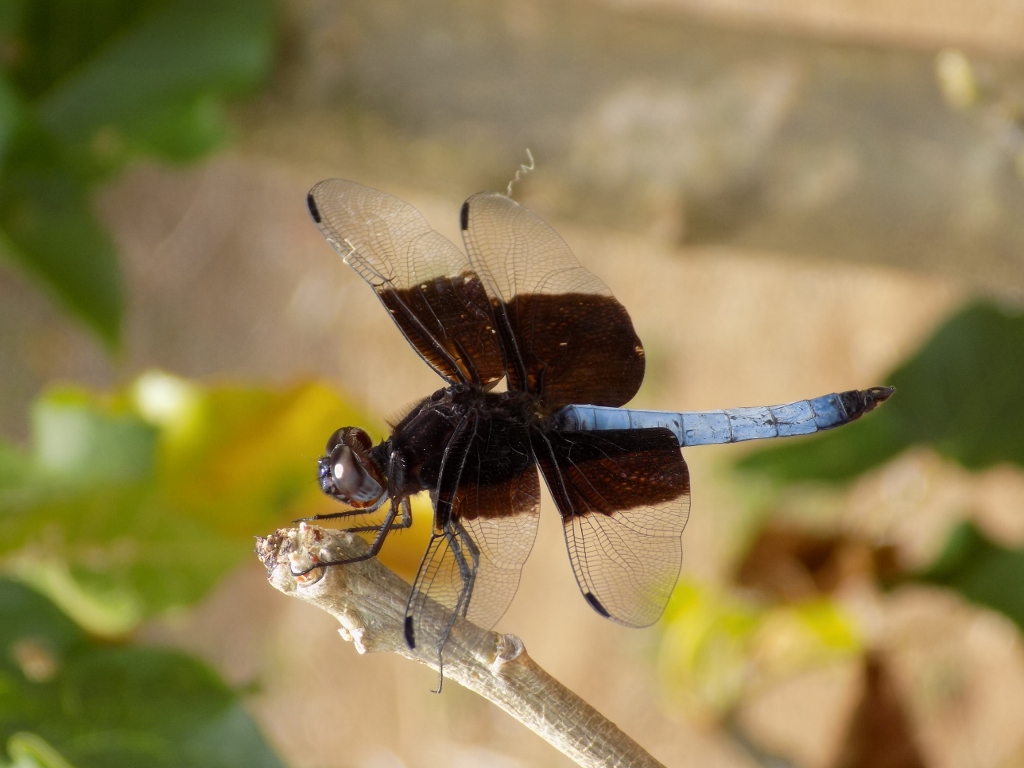 Madagascar jungle skimmer (Thermorthemis madagascariensis)
Madagascar jungle skimmer (Thermorthemis madagascariensis)
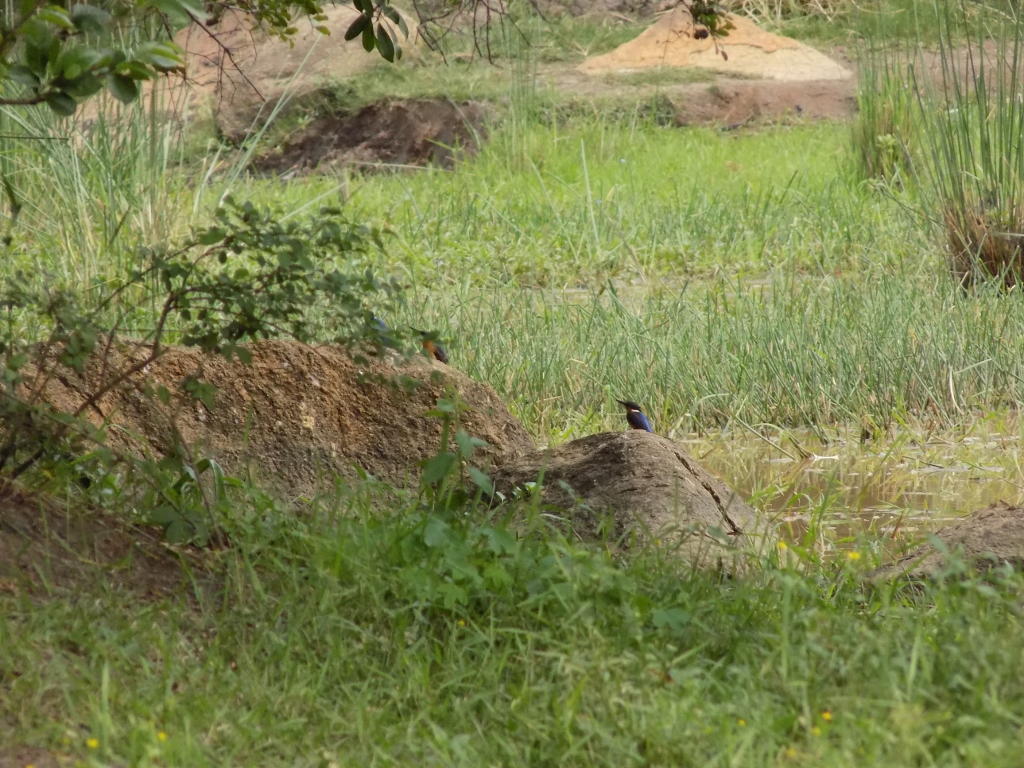 Madagascar kingfisher
Madagascar kingfisher
We also walked along a path that led beside a pond in which a couple of women were collecting something using a net. During the entire tour, the guide kept emphasising the role of the local community in the reserve and these two women seemed rather suspicious – as if they were more posing for the reserve’s visitors than really trying to catch something in the pond. On the other hand, if this helps the development of the local community and if these two women had a share in our tickets for posing for us, then all is fine.
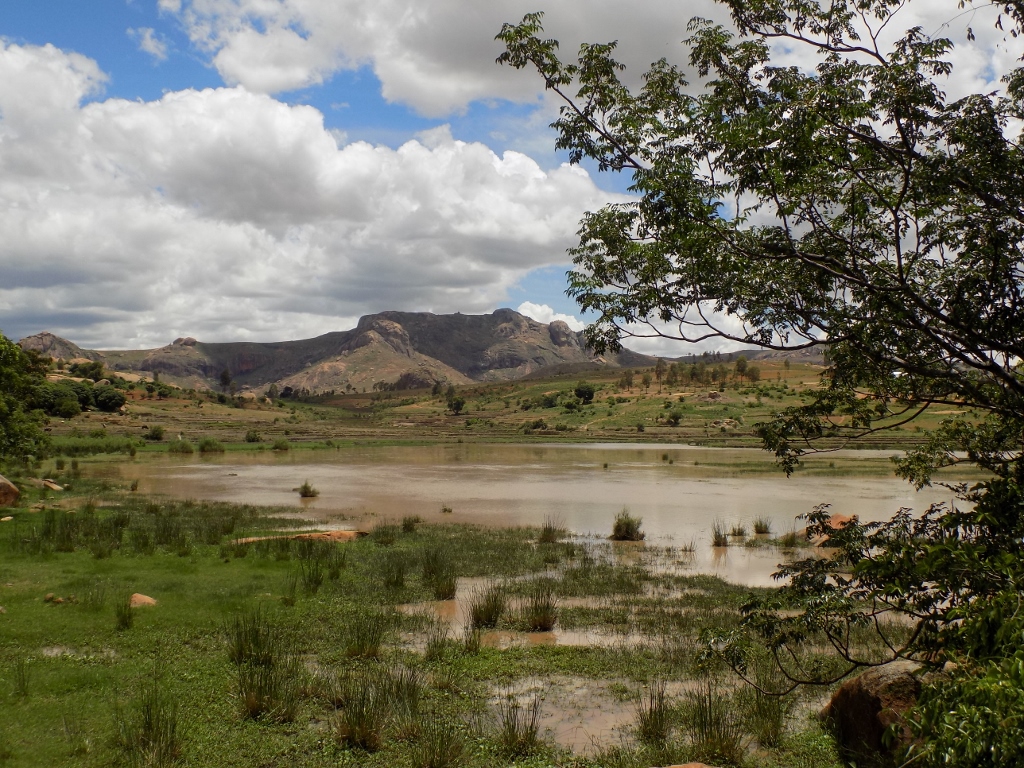 A lake beside the Anja Reserve
A lake beside the Anja Reserve
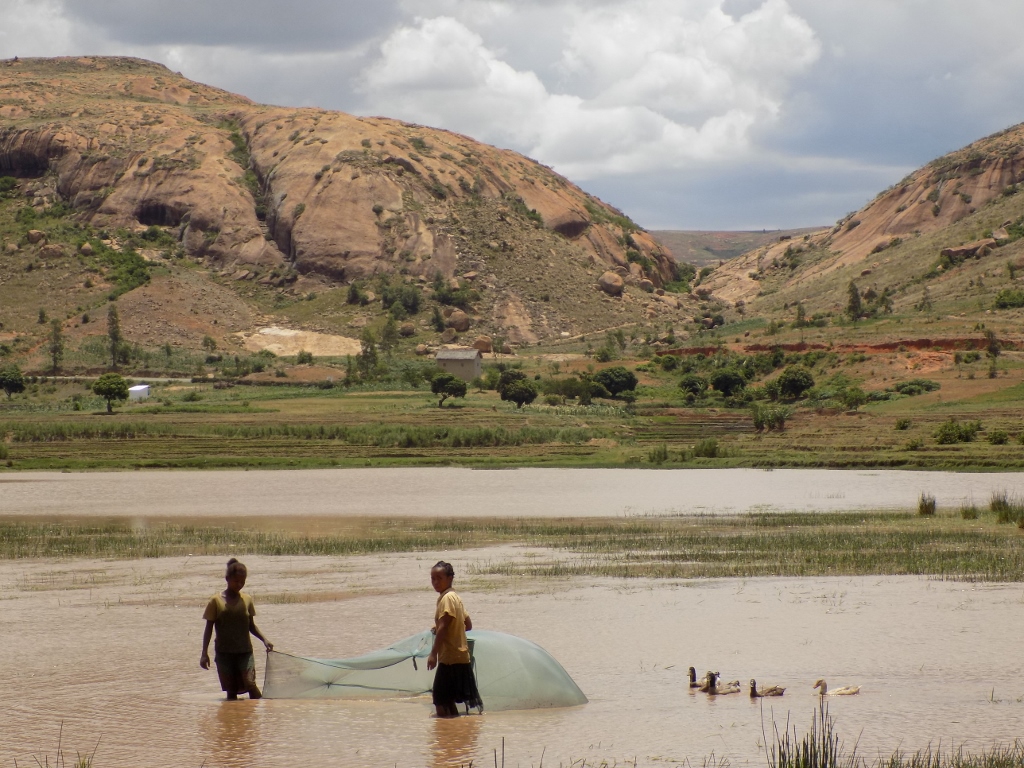 The ducks are there to help if necessary
The ducks are there to help if necessary
The path led beside the forest and already there we noticed some lemurs, which was actually not difficult at all.
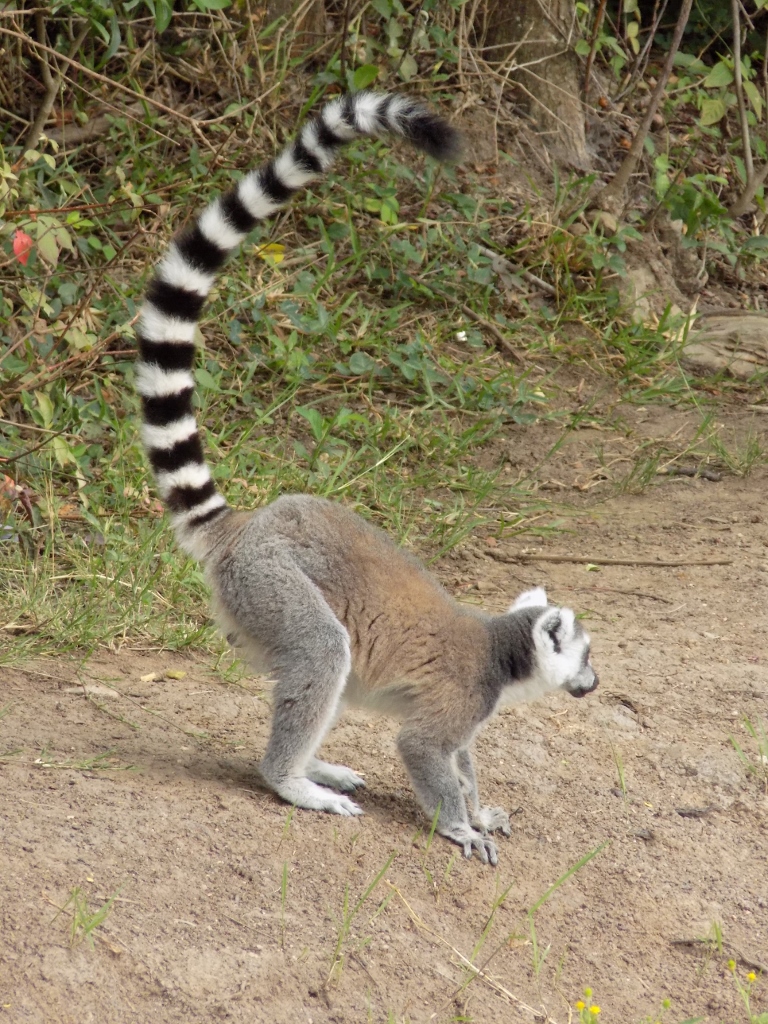 A ring-tail lemur on the walking path
A ring-tail lemur on the walking path
Then we entered the forest following our guide and his assistant, and we soon came across a new group of ring-tail lemurs.
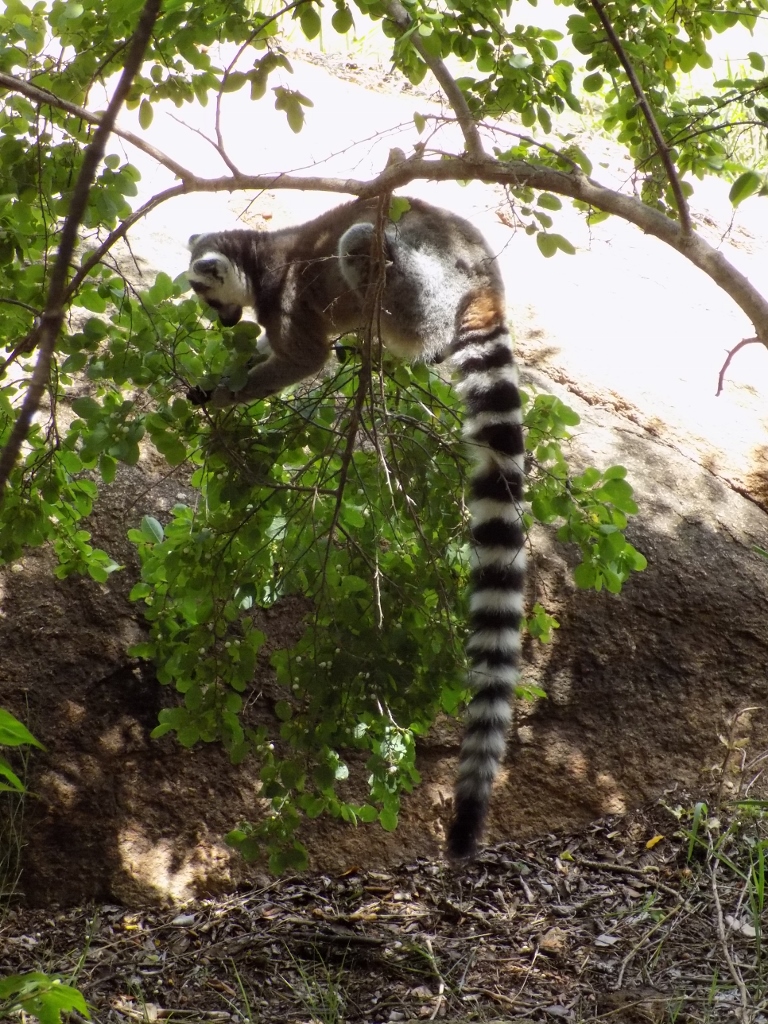 Keeping a perfect balance on a thin branch
Keeping a perfect balance on a thin branch
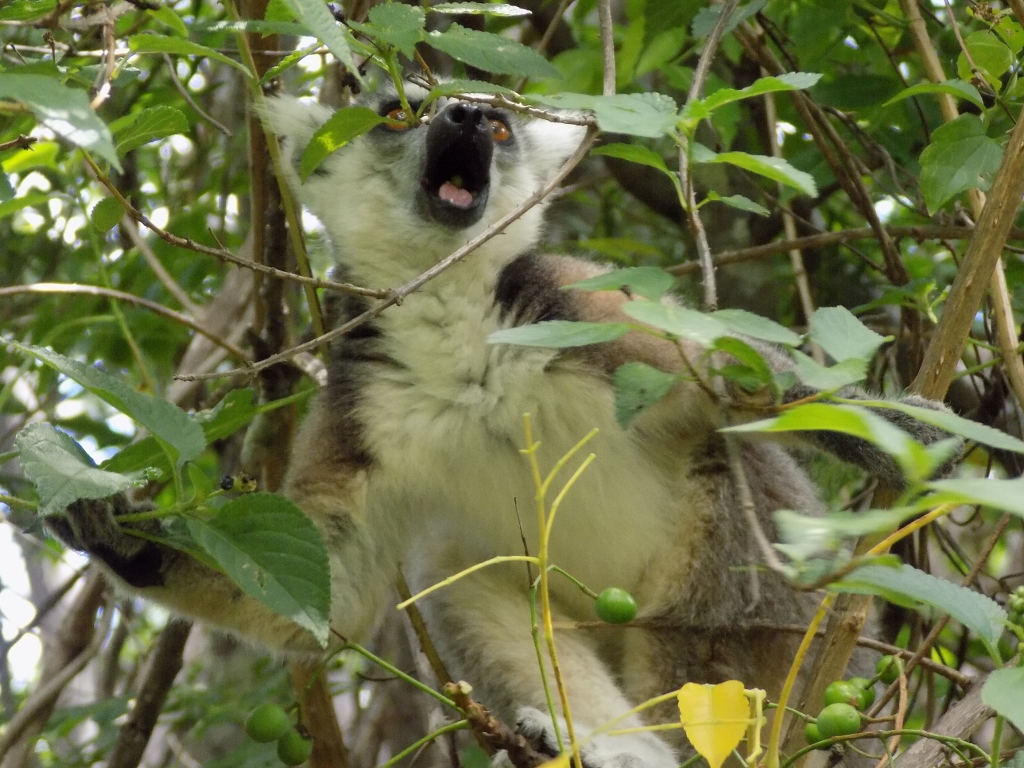 A lemur in the treetop
A lemur in the treetop
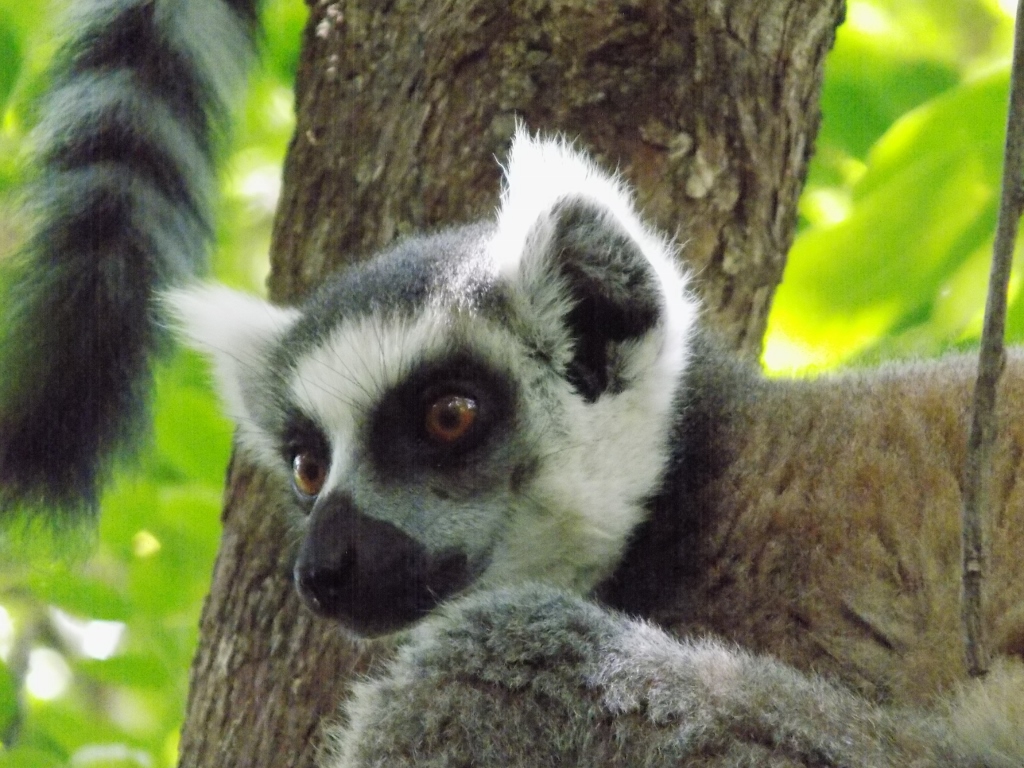 Ring-tail lemur
Ring-tail lemur
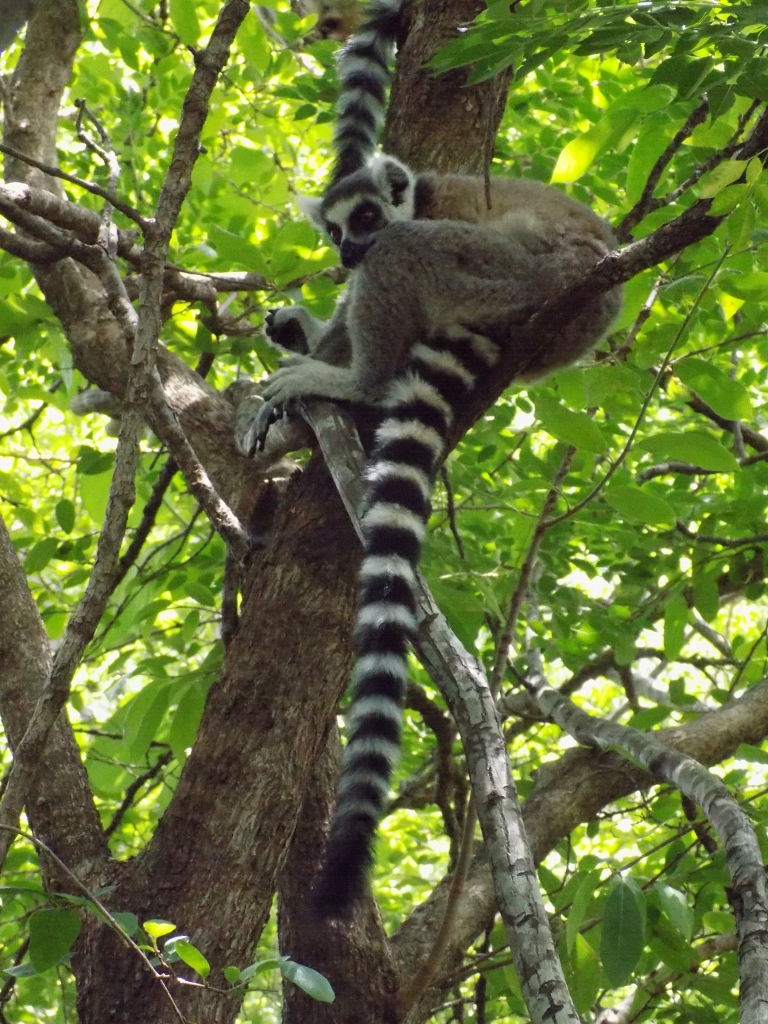 Ring-tail lemur
Ring-tail lemur
When you walk under the treetops in which there are lemurs, especially when you stand right underneath while looking up, it is important to be very vigilant and to keep your mouth literally shut, since lemurs tend to do their things whether somebody is watching them or not.
So, after this observing of the lemurs, Alex, our guide, proposed that we went to a viewpoint. We agreed and that was yet another one of the many great experiences. Not only because of the climbing over granite rocks which were occasionally very steep, but very safe for our hiking boots/shoes which adhered well, i.e., there was no slipping, but also in the end because of the spectacular view.
To start with, however, we came across yet another resident of the Anja Reserve. This was a small snake. However, there was no need to panic. Namely, it seems almost incredible and yet it is a fact that in Madagascar which is a part of Africa there are no poisonous snakes.
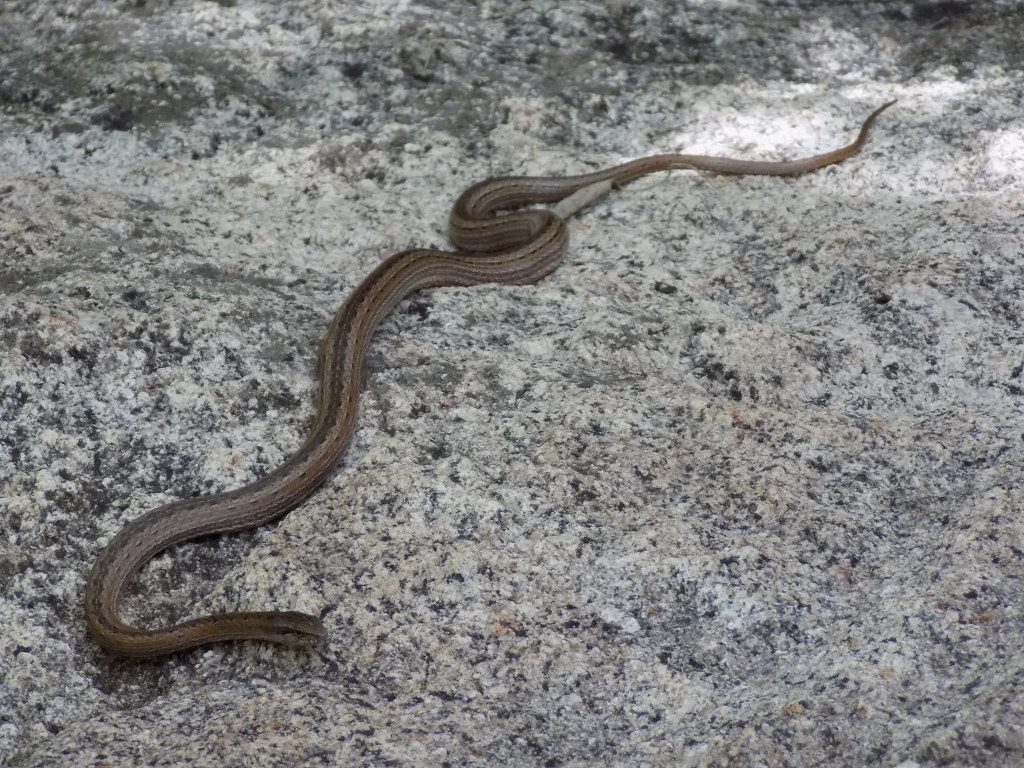 Snake on a granite rock in the Anja Reserve
Snake on a granite rock in the Anja Reserve
Once upon a time I used to go regularly on hiking tours, most often to Montenegro and even to this very day my heart leaps with joy every time I have an opportunity to climb hills and mountains, provided the heart is not too busy pumping blood in order for me to catch my breath. Here, in the Anja Reserve, we had an opportunity to climb a viewpoint and I was extremely happy and content.
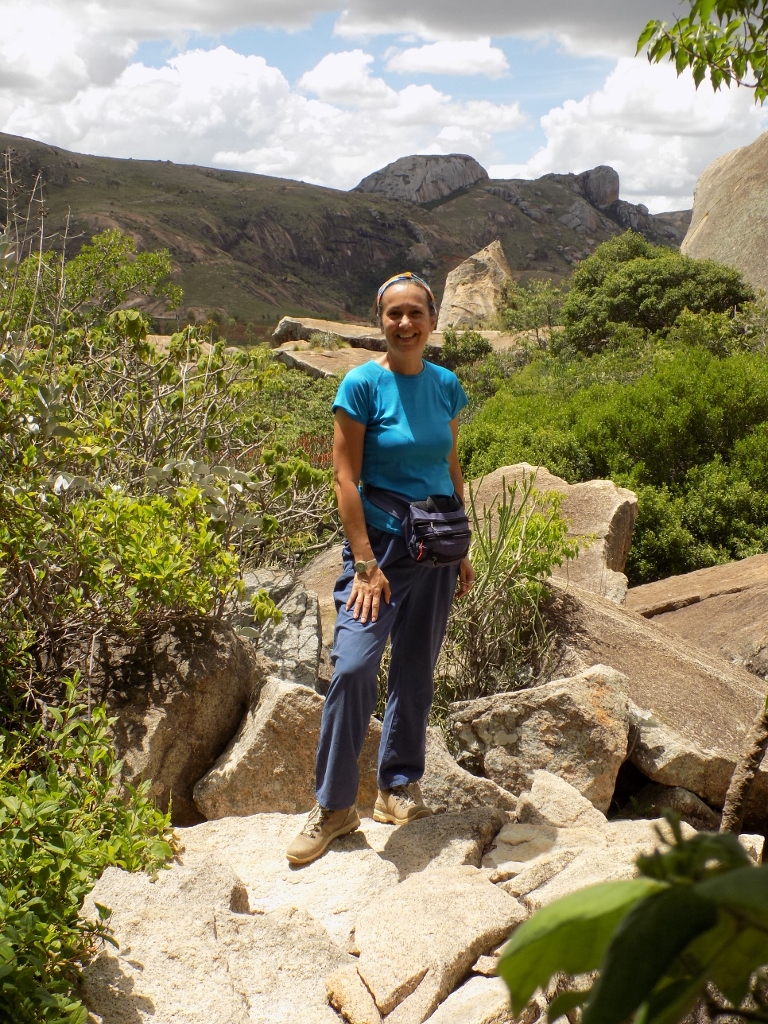 Climbing hills of central Madagascar
Climbing hills of central Madagascar
Of course, those who stay here a little longer and who have the necessary inclinations and fitness can also climb the surrounding peaks, but the two of us were very pleased with what we had achieved and when we reached the main viewpoint we first sat down to have our photo taken.
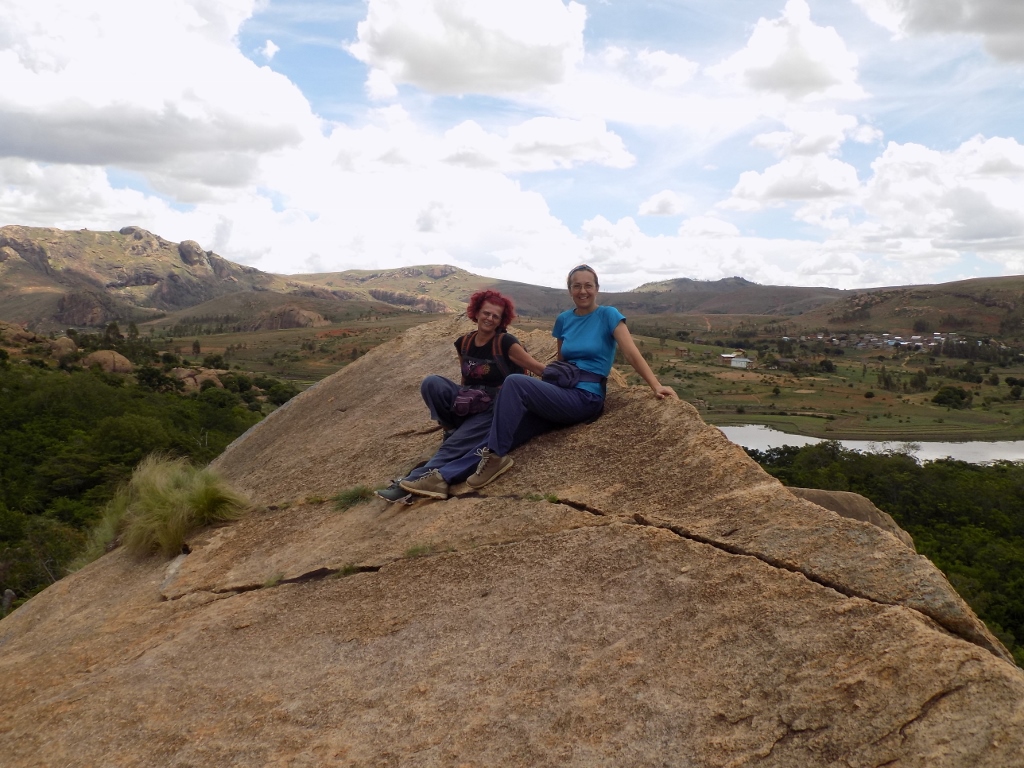 Sitting content at the viewpoint in the Anja Reserve
Sitting content at the viewpoint in the Anja Reserve
And then I took my camera from the guide and started to take photos myself. Each and every detail, not to mention the overall picture, took my breath away although I was not climbing in those moments and was only standing looking at the beauty that was there in front of me.
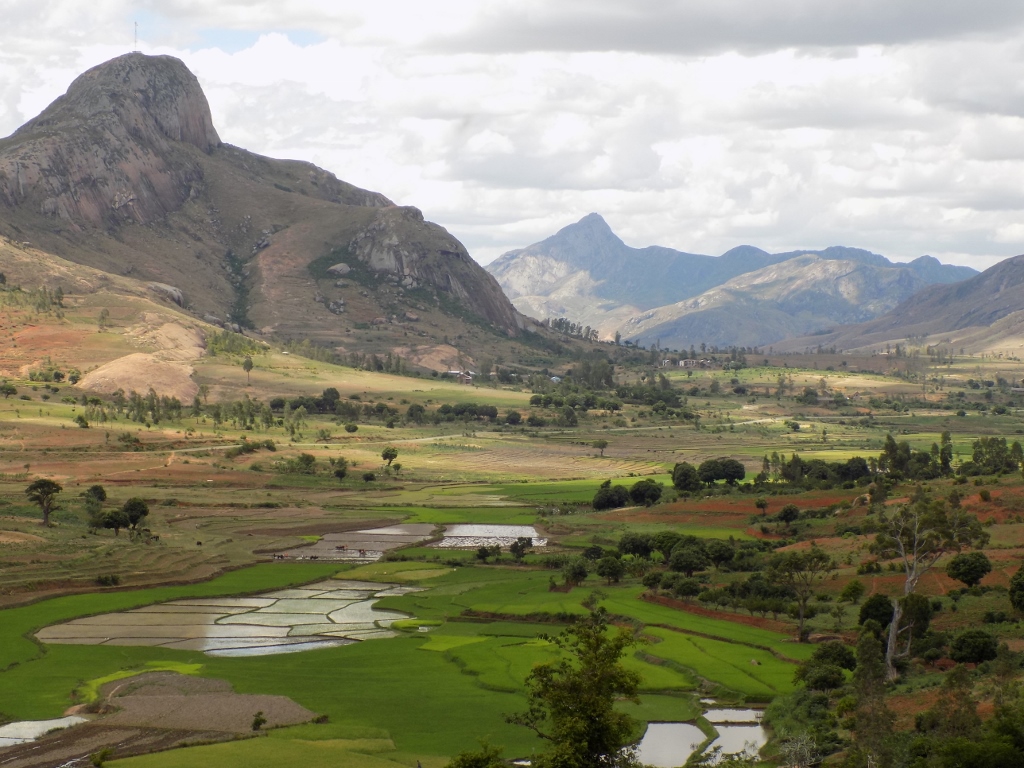 It’s all the same landscape and yet each point of view made it uniquely stunning
It’s all the same landscape and yet each point of view made it uniquely stunning
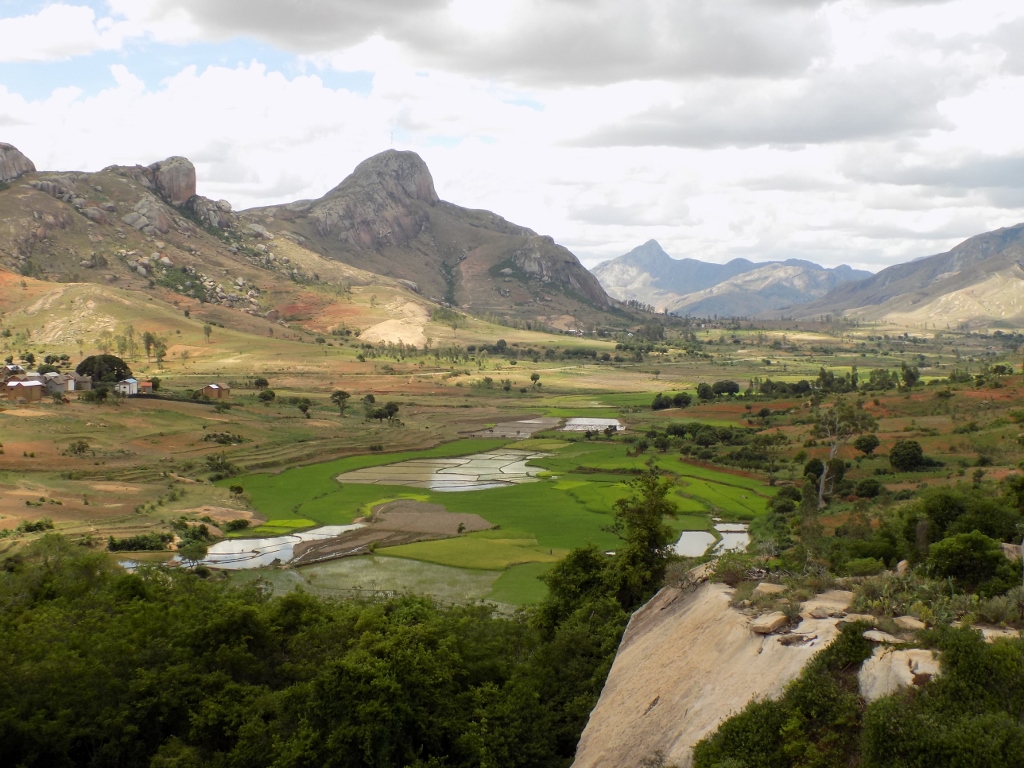 It’s all the same landscape and yet each point of view made it uniquely stunning
It’s all the same landscape and yet each point of view made it uniquely stunning
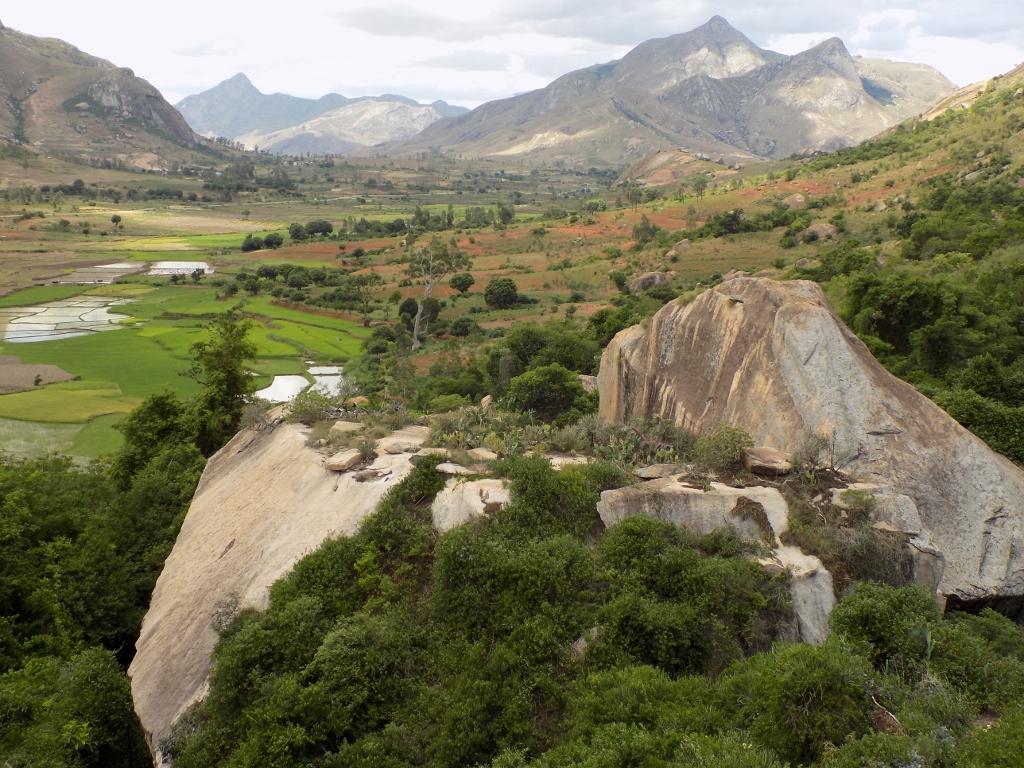 It’s all the same landscape and yet each point of view made it uniquely stunning
It’s all the same landscape and yet each point of view made it uniquely stunning
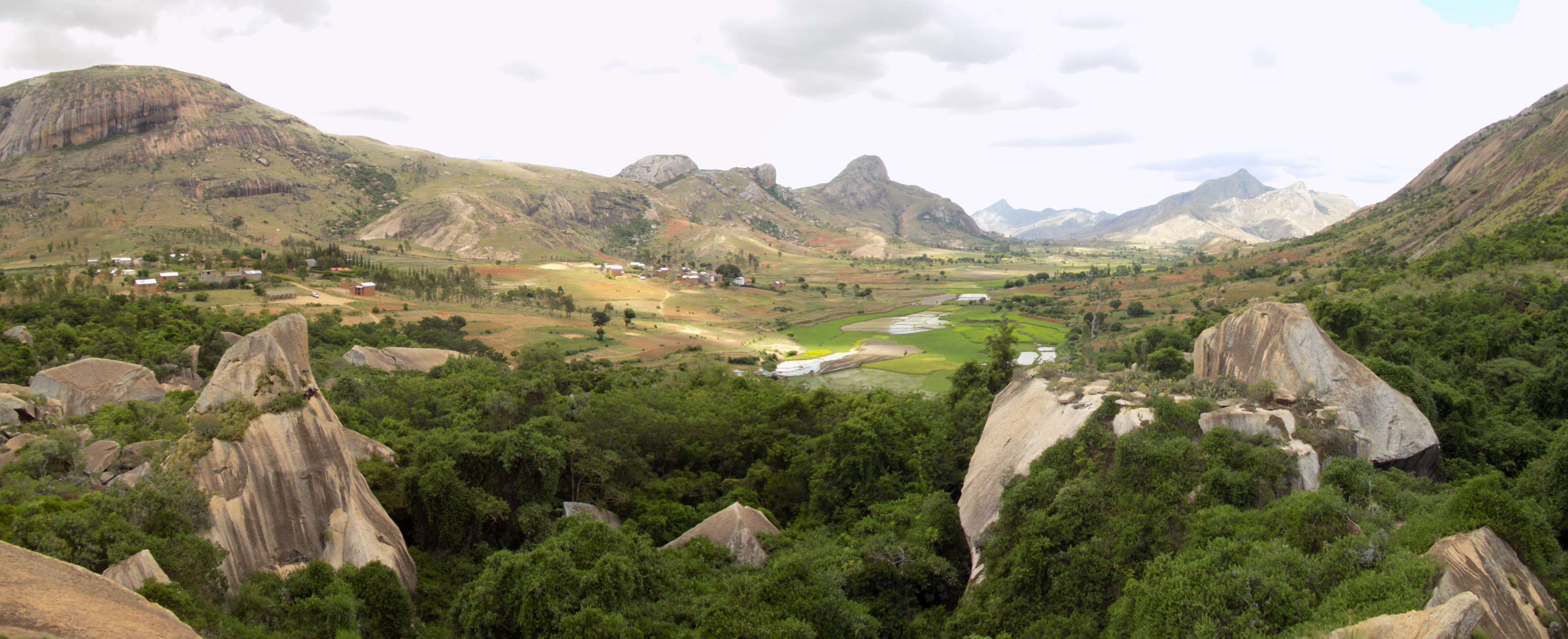
When turning back to go towards the parking lot where the car was waiting for us, we had to go down these granite rocks. Usually Alex, our local guide, and his “silent” partner (the man did not speak to us at all, but if necessary he imitated the sounds produced by lemurs) would give us the hand in order for us to cover the steep rocks more safely while saying: “Mora, mora,” meaning “Slowly, slowly.” This is one of the most frequently used expressions on Madagascar and also a good illustration about how the Malagasy function, so all the guides like to stress this. Still, in order for one to descend safely to flatter sections of the forest, at one point there was even a fixed rope that had to be used since the rock was just far too steep there, almost vertical, and it was not possible to cover that section in any other way.
While walking here we came across different residents of the Anja Reserve which we had not seen earlier. I also filmed the chameleon on the move and this may be seen in the short video below.
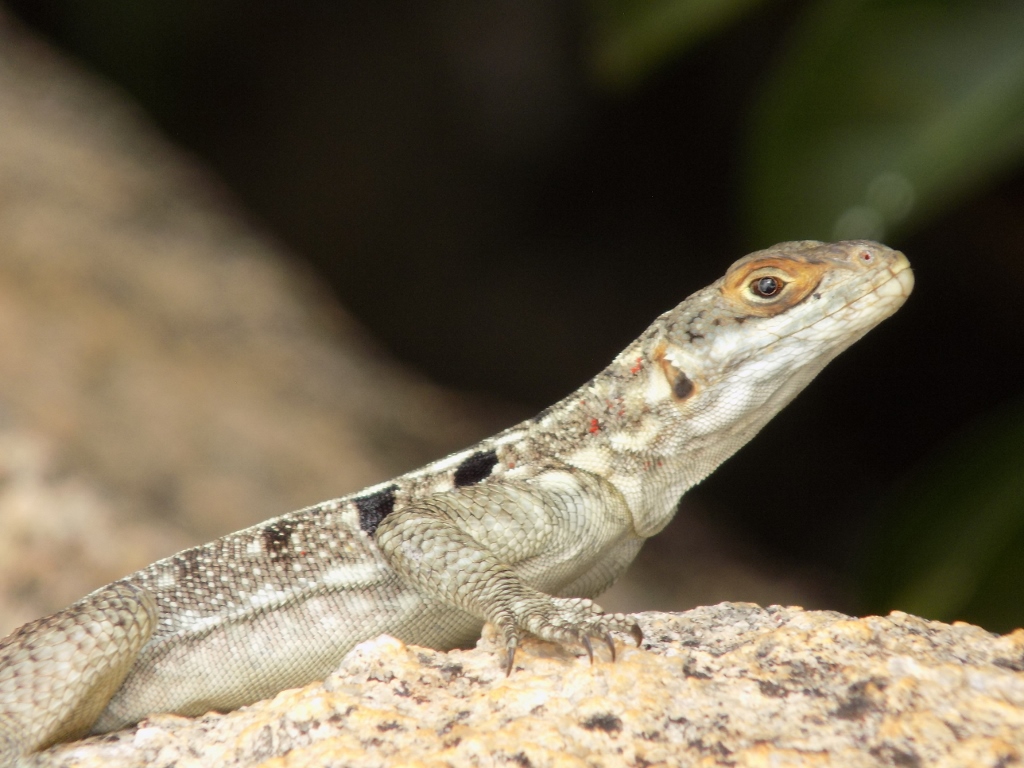 A lizard
A lizard
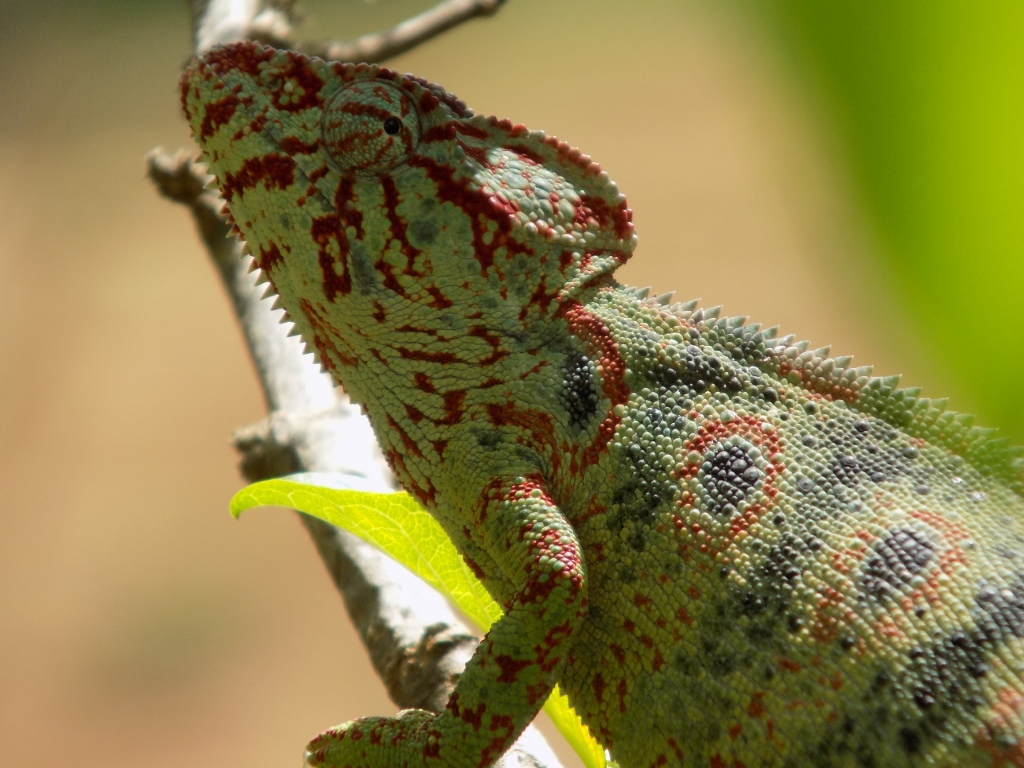 A chameleon
A chameleon
When we got back to our car, we parted with the guides and I also took the opportunity to take a photo of the “silent” partner, as well as to look back once again at the stunning massif Three Sisters and the Anja Reserve.
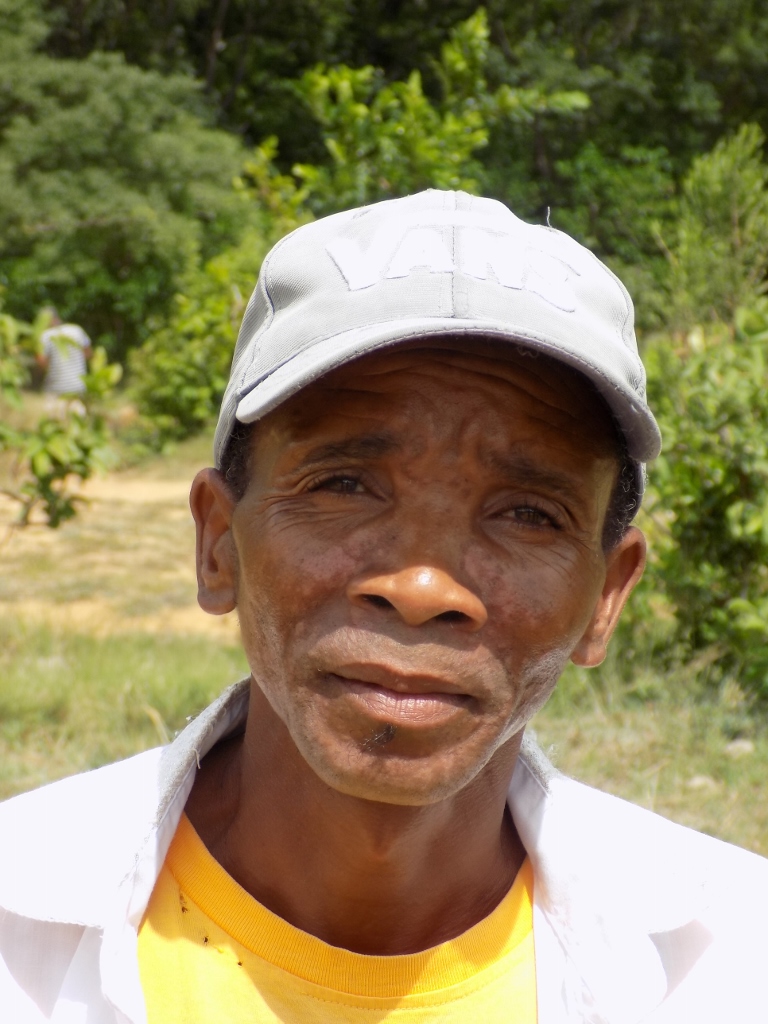 A silent Malagasy
A silent Malagasy

We were very happy with this visit and when we hit the road again it became clear that our driver Rija was in some kind of a hurry, although he still drove perfectly well and carefully. The thing was that we had another section of the asphalt road ahead of us, but then my travel plan involved the turning onto a dirt road and driving for some 20 kilometres. The potential problem lay in the possible rain, since when abundant downpours typical of the rainy season start then all that soil turns into mud which is difficult to drive through – even with a 4x4 vehicle. As he told us, when cars and humans get stuck, the only solution was for the camp at which we would be staying over the next two days to send their own truck because only such vehicles could safely pass different obstacles that exist along the road, especially when it is full of mud and water.
When after driving along the more elevated terrains in this part of the country we came to a point from which the road started to descend, in addition to my (renewed) unspeakable delight with the magical beauty of the scenery, it became perfectly clear that Rija’s trepidation was not unfounded. Because, as it may be seen in the photo below, the clouds kept gathering and in addition to adding a dramatic flair to the visual experience, they also suggested a possibility of rain.
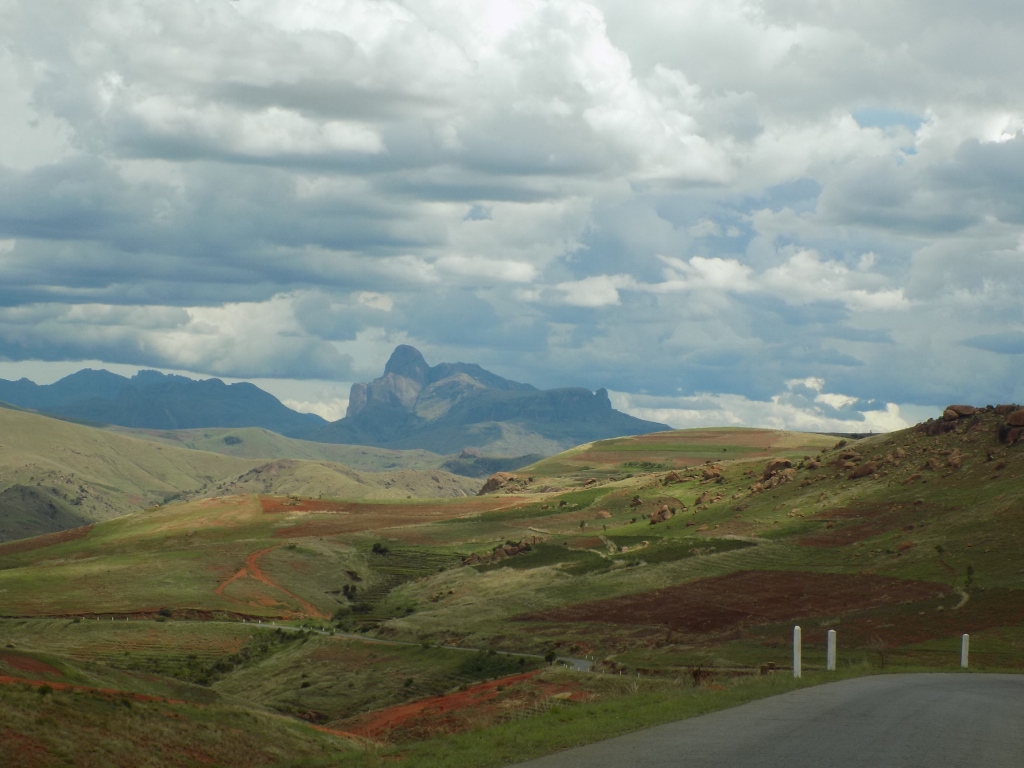 Clouds above the Andringitra Massif
Clouds above the Andringitra Massif
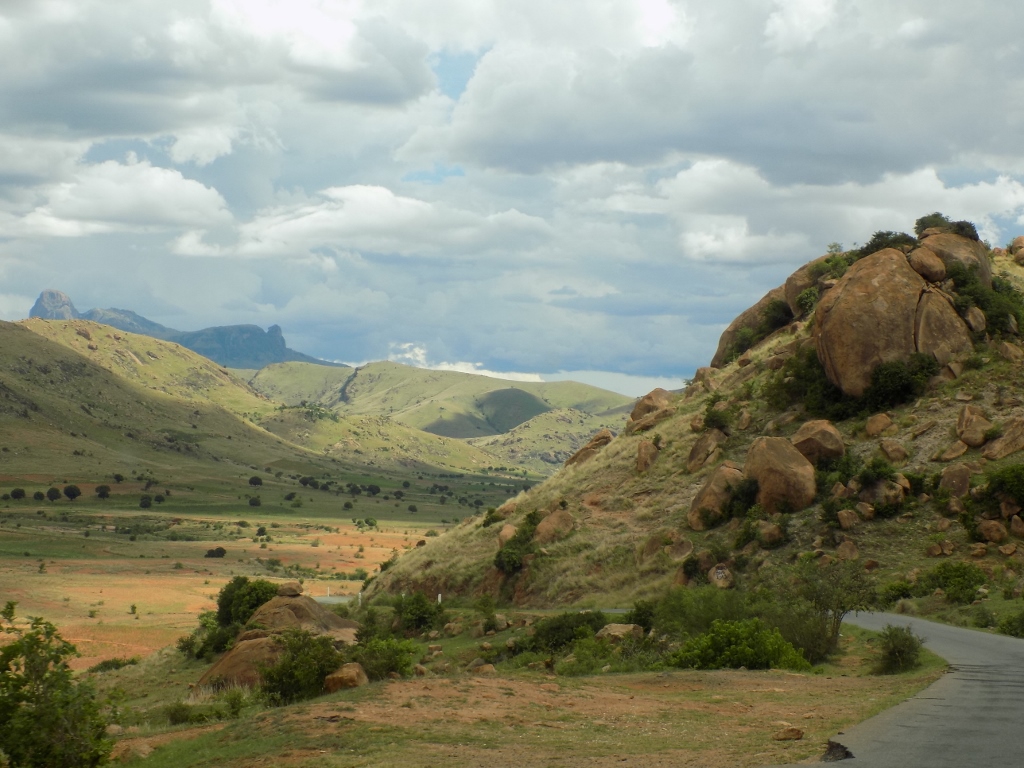 Driving down the asphalt road
Driving down the asphalt road
When we turned from the paved road and continued along the dirt road I thought that there was no reason to panic after all, since everything appeared fine and flat, and it seemed to me that even more abundant rain would not cause any trouble.
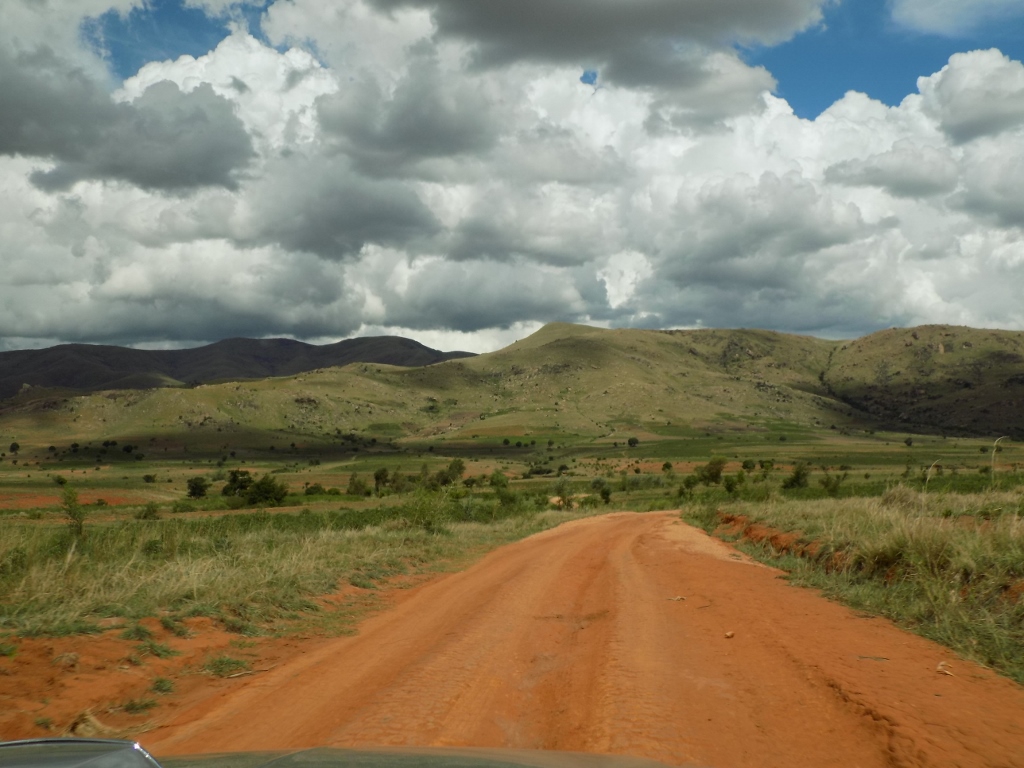 We are now on the dirt road
We are now on the dirt road
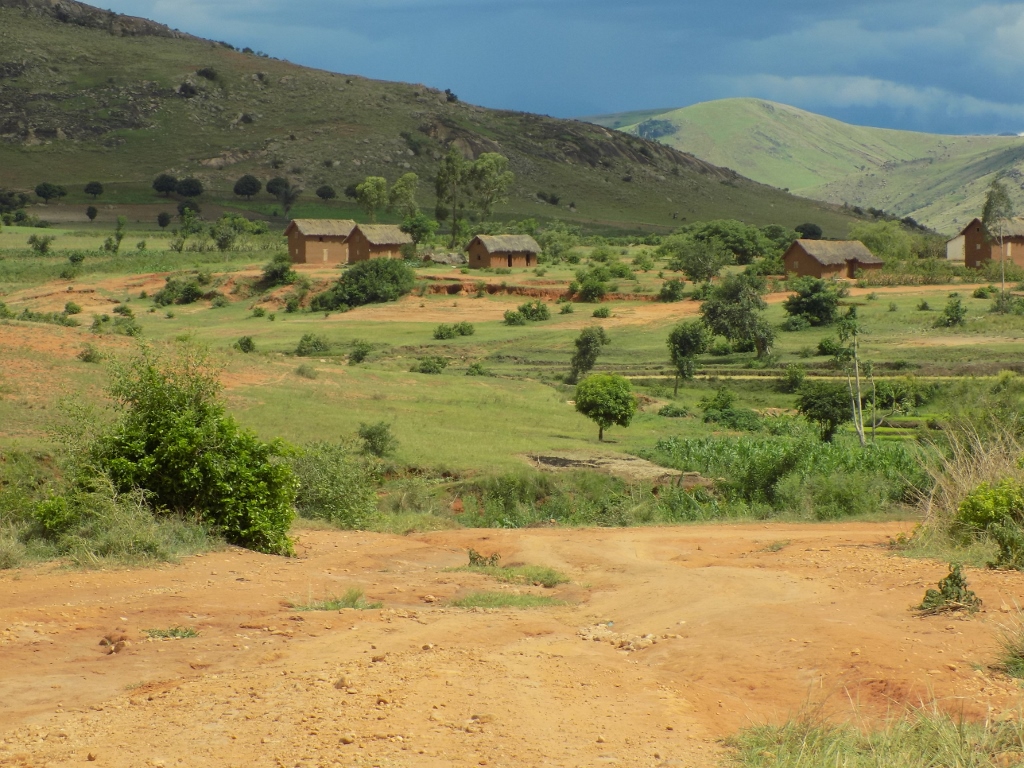 Everything looked nice and tame, and here is a village, too
Everything looked nice and tame, and here is a village, too
And then we came across a ramp in a village. The local population had come up with an idea that it would be a good thing to charge a transit tax or perhaps they only charged a road toll in order to maintain the road. Because, from time to time it was possible to see small leftover patches of a former asphalt road which seasonal rains had washed away so long ago that the memory of it had turned into a legend. However, there were also parts of the road that were covered in nicely arranged stone cubes and it all seemed fine and stable.
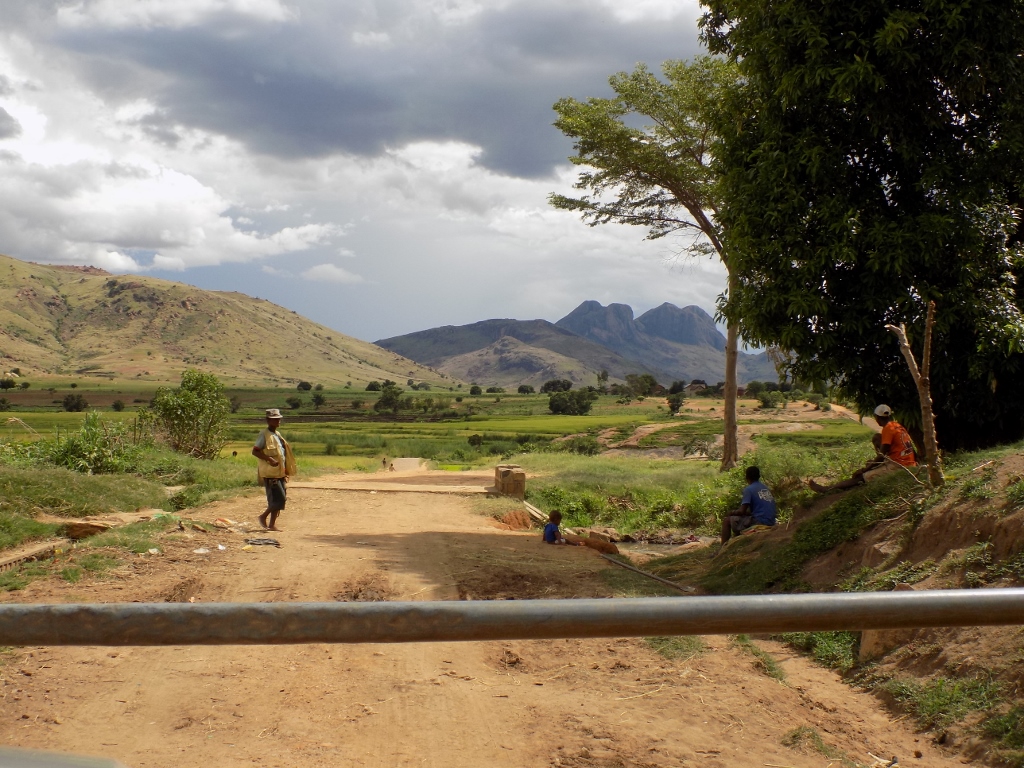 A ramp on the road
A ramp on the road
While Rija was translating and regulating the payment, after we had given him the money, I was looking at several women who were standing nearby. The Malagasy women often wear hats with wide brims probably in order to protect themselves against the scorching sun. Some women, such as the one in the photo below, were born to wear such hats – it suited her perfectly.
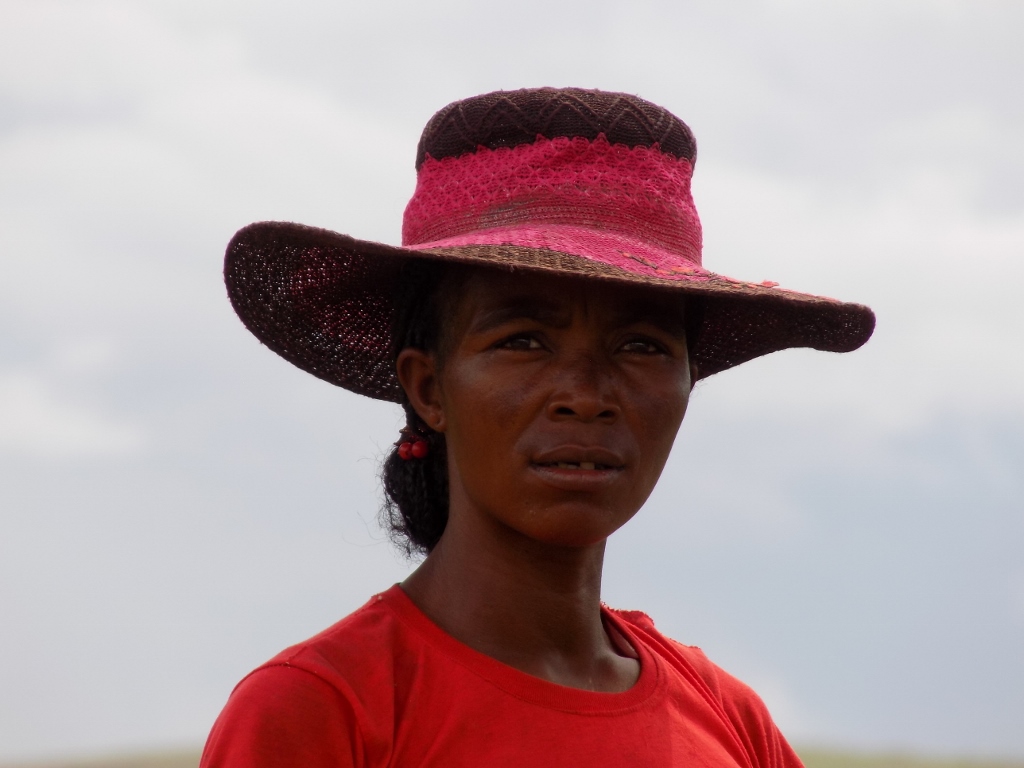 The elegant Malagasy woman
The elegant Malagasy woman
Of course, the road also took us beside numerous fields and many contained rice in different growth phases.
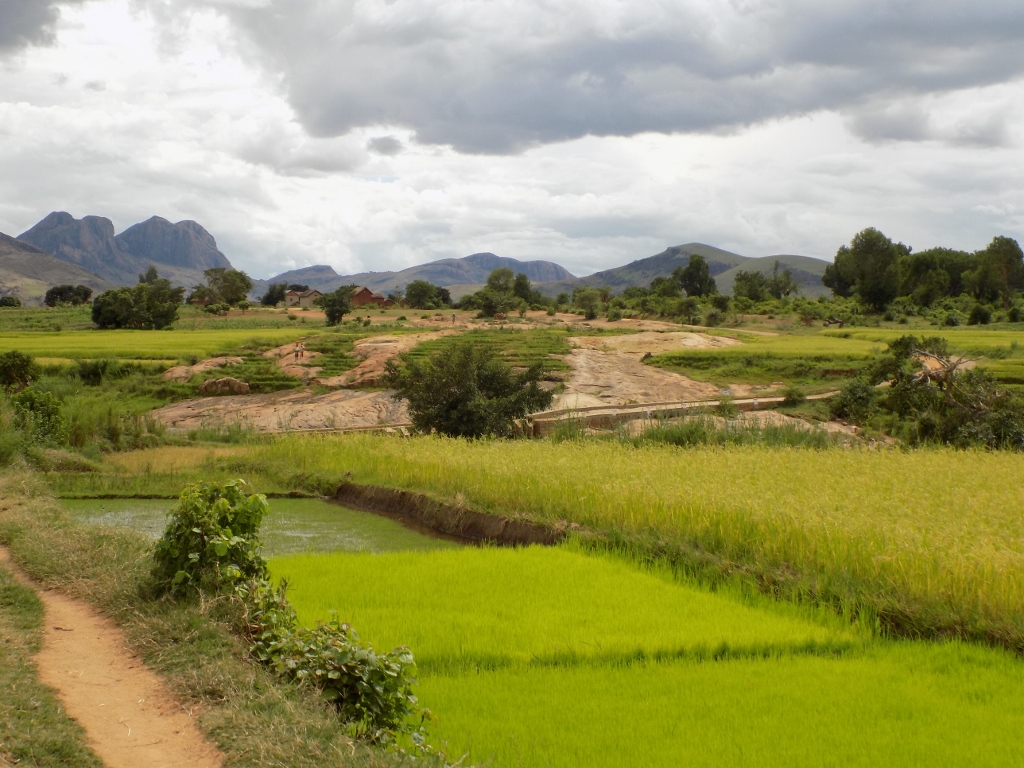 While the rice is young and bright green in one field, it is already starting to ripen in the other
While the rice is young and bright green in one field, it is already starting to ripen in the other
Having paid the road toll, we continued with our drive and soon we came to a slightly wider river which flowed between rocky banks. There was a bridge over the river and it all still seemed fine and reliable, but then Rija told us that when it rained, the river could swell so much that the bridge could not be seen.
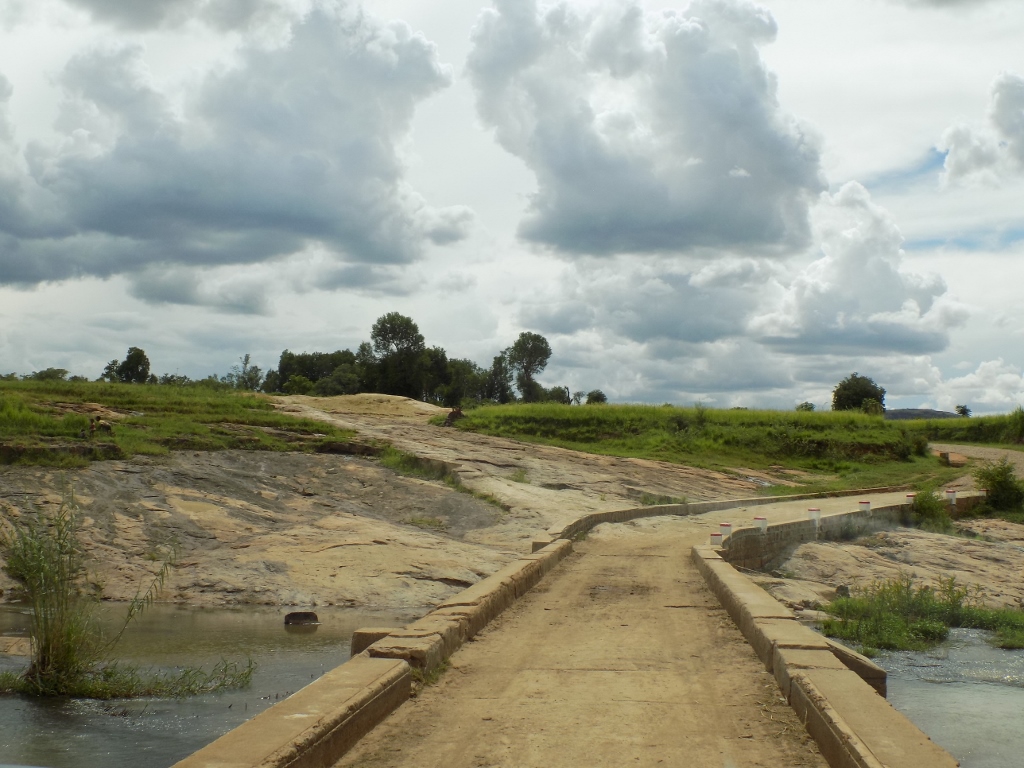 Bridge over the River Zomandao
Bridge over the River Zomandao
However, while we were on this road, there was still no rain. We even had the sun go through the clouds from time to time, while the local residents went about their business.
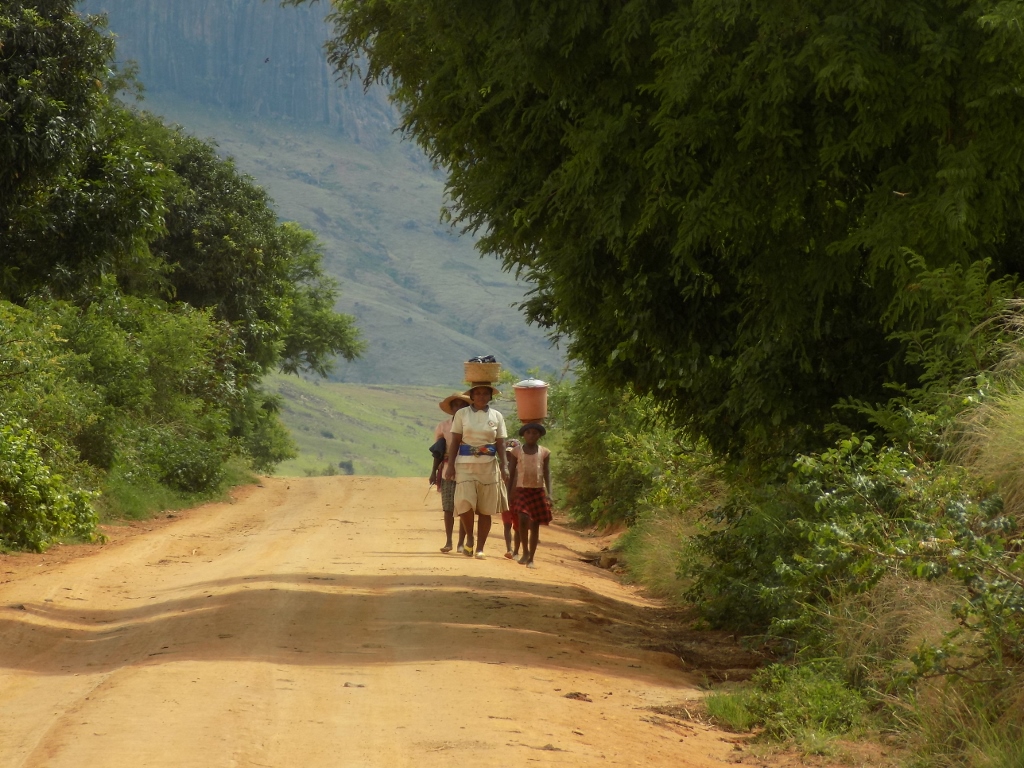 As I’ve said earlier, the skill of carrying heavy loads on the top of one’s head is acquired very early
As I’ve said earlier, the skill of carrying heavy loads on the top of one’s head is acquired very early
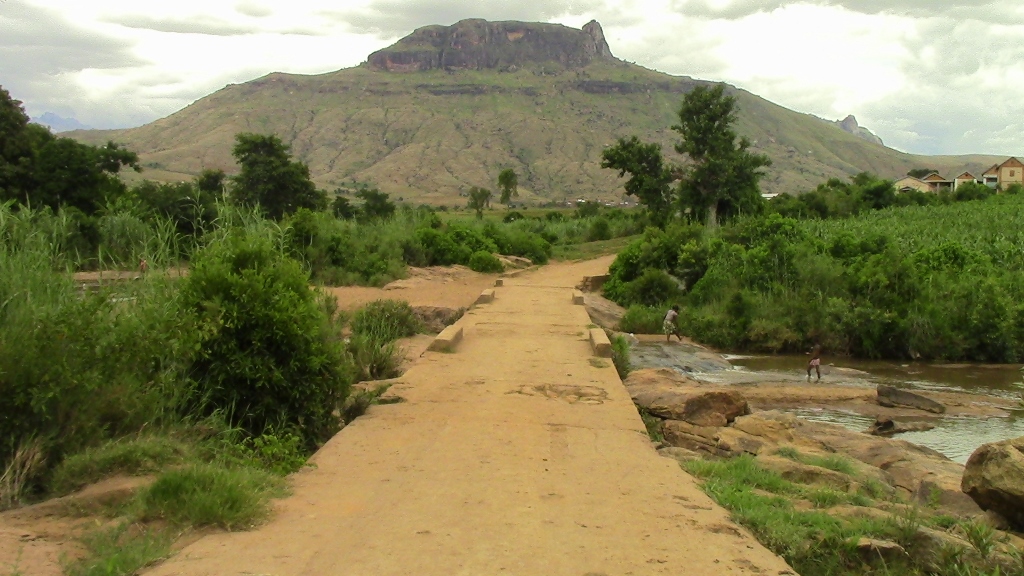 Doing the laundry and perhaps even bathing in a smaller river
Doing the laundry and perhaps even bathing in a smaller river
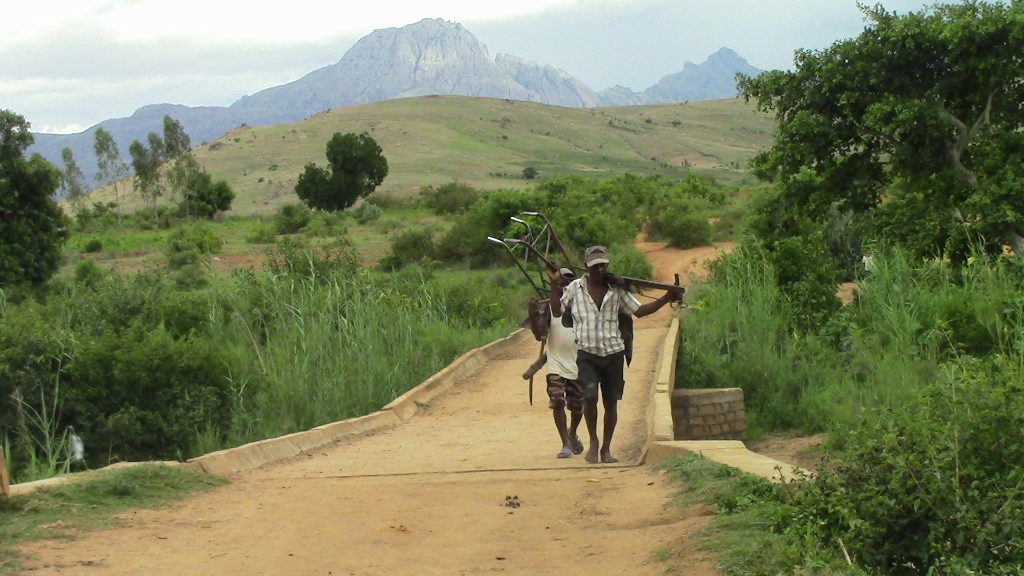 Returning from the field after the work has been done
Returning from the field after the work has been done
Along the way we passed through a larger village where there were houses with upper floor, as it can be seen in the following photo. However, that photo is particularly interesting because I caught with my camera a woman who was carrying a heavy load on her head, as well as a hat with a wide brim, but on top of all of this she also had the face mask on which the Malagasy women so often wear seemingly the entire day wherever they go and whatever they do in order to protect their tan and make it more beautiful. When I was a little girl and my mom combed my hair, I often complained that she was pulling it too much to which she would say: “Beauty requires enduring all sorts of things.” Well, the same goes for these women – in order to be beautiful they walk around while being basically ugly the whole day.
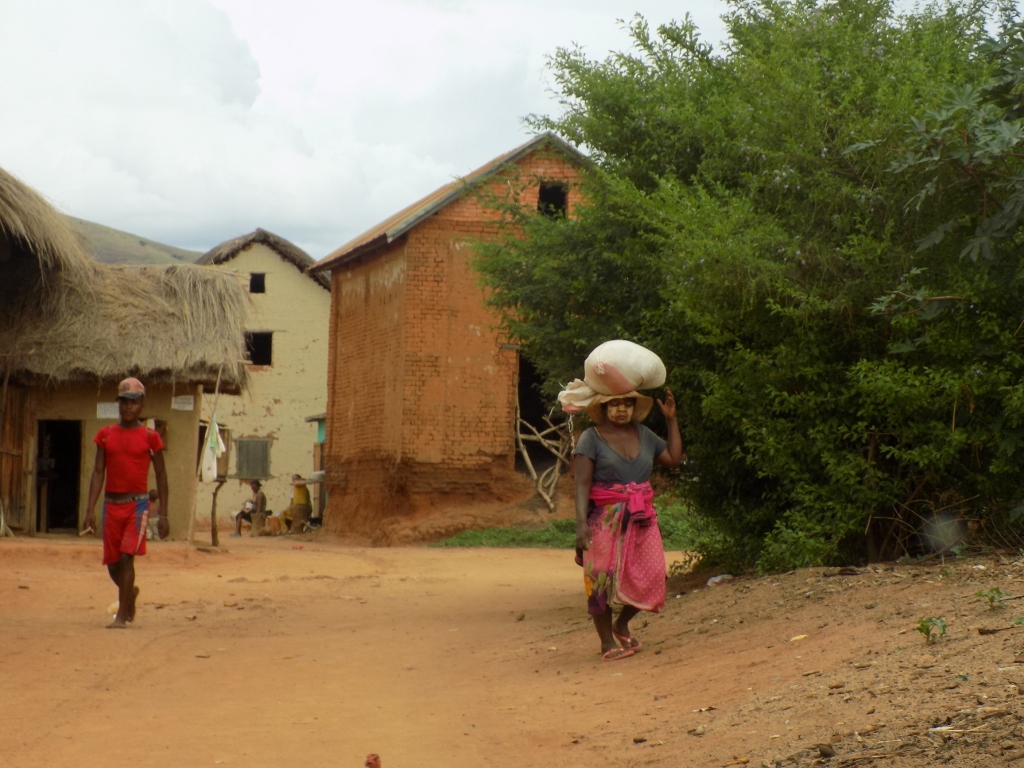 Beauty requires enduring all sorts of things
Beauty requires enduring all sorts of things
But, let there be no mistake, even on a dry day and regardless of the small paved sections, the road was not a simple one to drive on at all and it was certainly not kind to the shock absorbers. My photographs do not even begin to convey the real state of affairs.
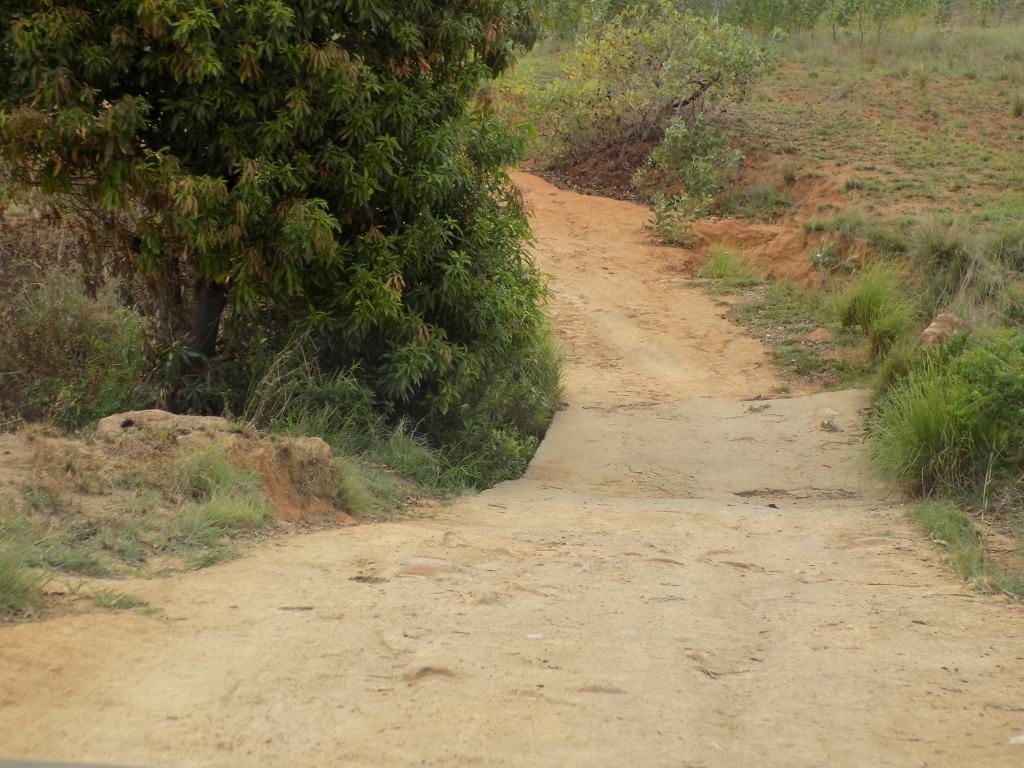 Less romantic sections of the dirt road
Less romantic sections of the dirt road
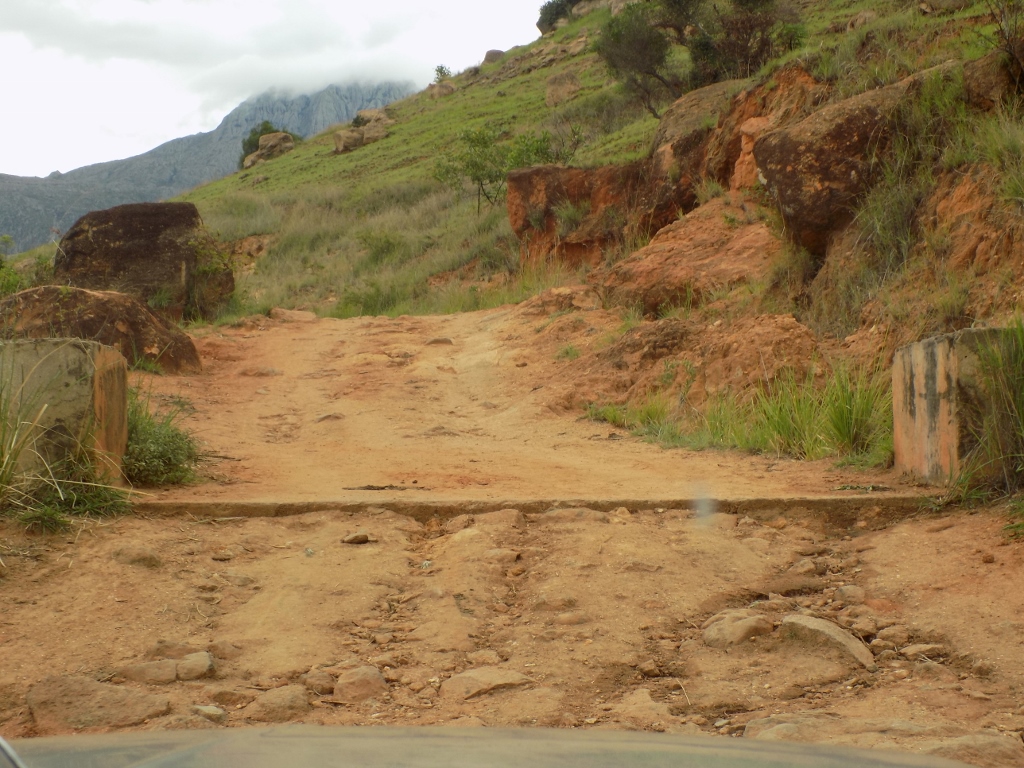 Less romantic sections of the dirt road
Less romantic sections of the dirt road
And then we finally saw them – Mount Chameleon and Mount Tsaranoro.
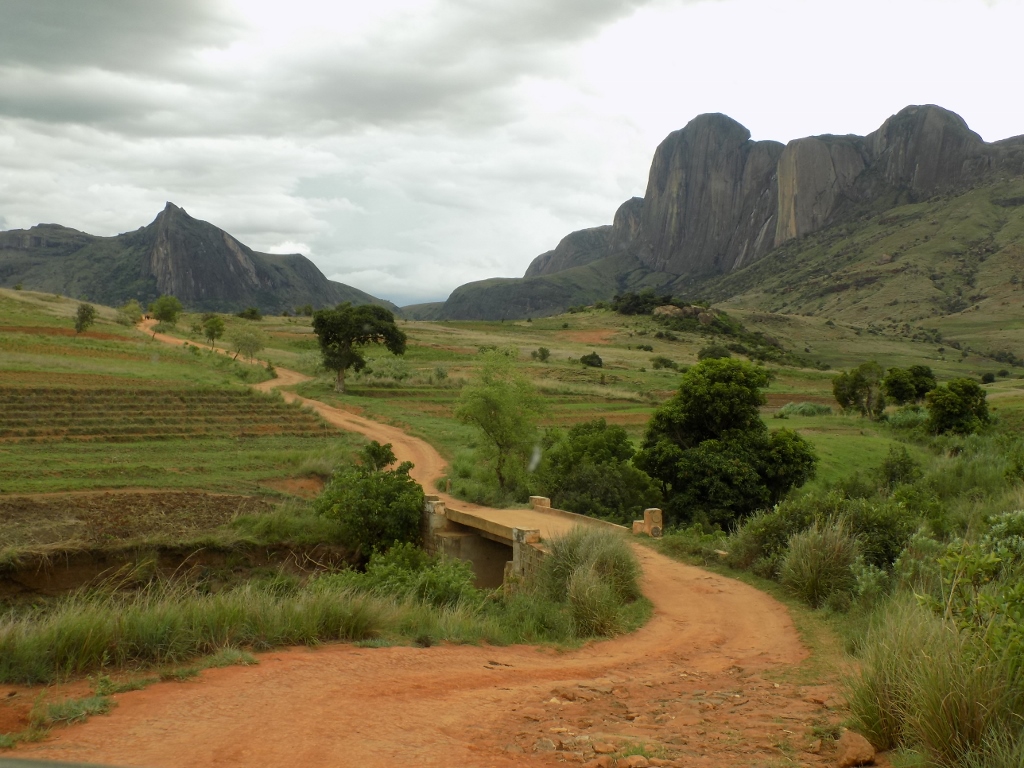 Mount Chameleon is to the left and Mount Tsaranoro is to the right
Mount Chameleon is to the left and Mount Tsaranoro is to the right
Bearing in mind the clouds in the sky we were very glad that we had finally reached our destination of the day and that was the Tsaranoro Valley. It is one of two valleys that are linked to the Andringitra National Park, which is interesting for several reasons. On the one hand, because of the rainforest that belongs to it, it is inscribed in the UNESCO’s World Heritage List, while on the other hand it holds the second highest peak on Madagascar, as well as numerous other peaks since the national park also includes a part of the mountain massif Andringitra after which it has been named.
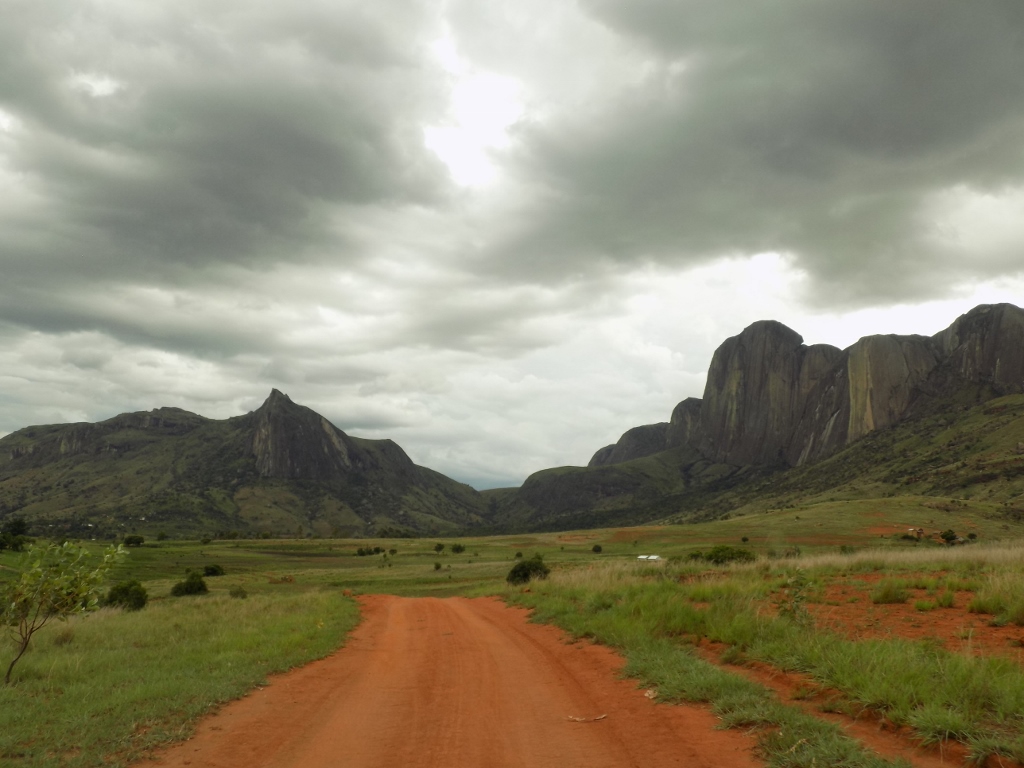 Mount Chameleon is to the left and Mount Tsaranoro is to the right
Mount Chameleon is to the left and Mount Tsaranoro is to the right
The visitors mostly come here precisely because of that mountain massif and the alpinism and hiking linked to that, although, according to what I have read, merely around some 3000 visitors come here annually, which is very little for such a large expanse. Thus, during our stay here, which included two nights, we were the only foreigners in this part of the country. And that was perfectly fine with us.
I organised those two nights for us in this valley in such a way that we stayed at a “camp” that consisted of tents. Still, these were not some tiny, unstable tents placed on a clearing and exposed to the elements. No. These were slightly bigger, spacious tents the back wall of which had been removed, while the tent “rested” against a wall made of solid material, all placed on a concrete base. They also had a veranda and a roof above it all that was fixed onto strong concrete pillars and a structure made of thick wooden beams. In other words, everything was very stable.
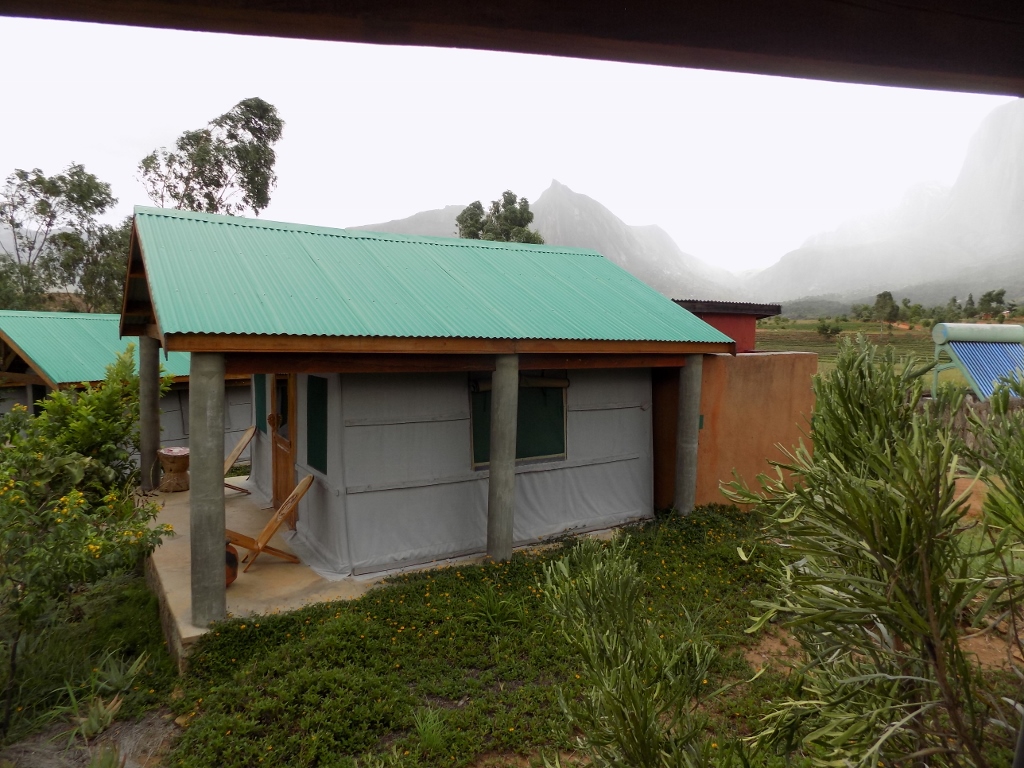 The “tent” in which we stayed
The “tent” in which we stayed
We had two nice beds inside, as well as a private bath (behind the fourth, built wall of the tent), with running water, toilet and a shower which was semi-open. What I want to say is that this was a separate room with very solid walls, but without a roof. I have never thought I would ever be inspired to take a photo of a shower cabin. And yet, it happened.
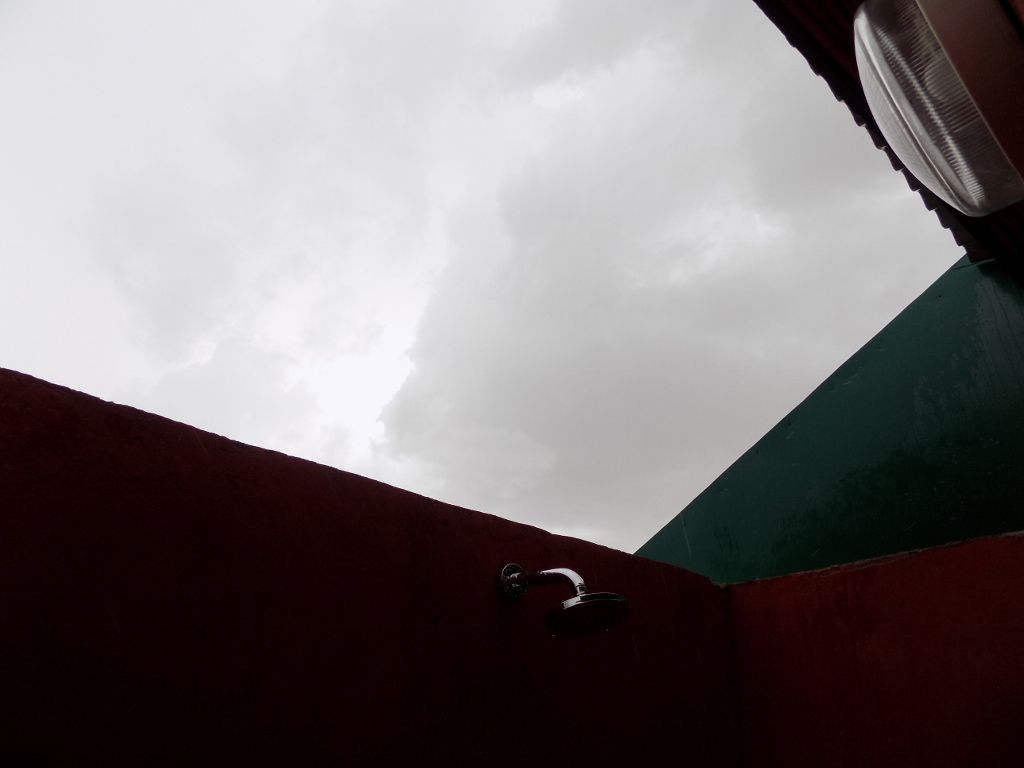 Roofless shower cabin
Roofless shower cabin
In addition, we had electricity here twice a day – for 2 hours in the morning and for 4 hours in the evening. There was also a very weak internet in the restaurant section, but I did not care too much about it. This was the place for the purification of the body and the spirit, as well as for some serious relaxation. Even if one did not want it, there was not much choice anyway. And for this reason the place was practically perfect.
I also went around our tent in order to have another look at the mountains that rose nearby.
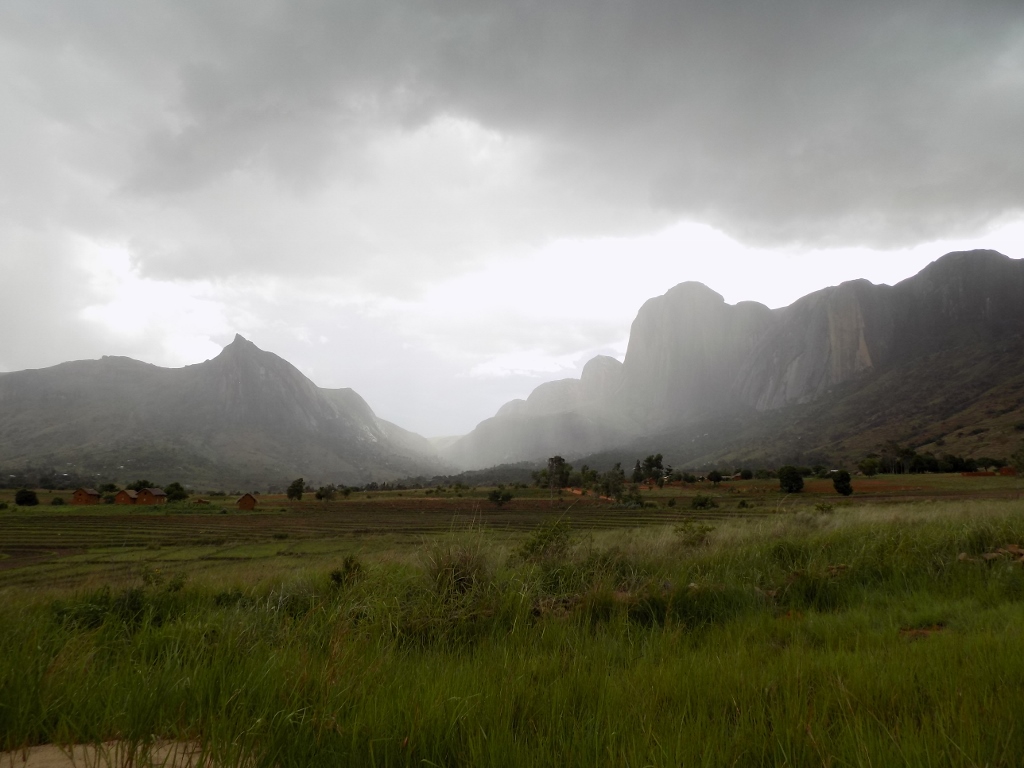 Mounts Chameleon and Tsaranoro
Mounts Chameleon and Tsaranoro

After the dry and initially sunny morning, and partially cloudy first part of the day, soon after our arrival and settling in the Tsaranoro Valley it started to rain. More or less, but practically constantly. This also meant that the two of us had no intention to go for any walks. We simply went to the reception and the restaurant section, after we had left our things in the “room,” and there we ordered some coffee and sat on the terrace. At first, as soon as the rain would diminish, I walked around the veranda and the immediate surroundings and I cannot begin to describe how much I enjoyed the beauty of the sights I was surrounded with. The layer of clouds was not uniformed, so the light kept changing from one minute to the next and this emphasised additionally the beauty of the surrounding nature.
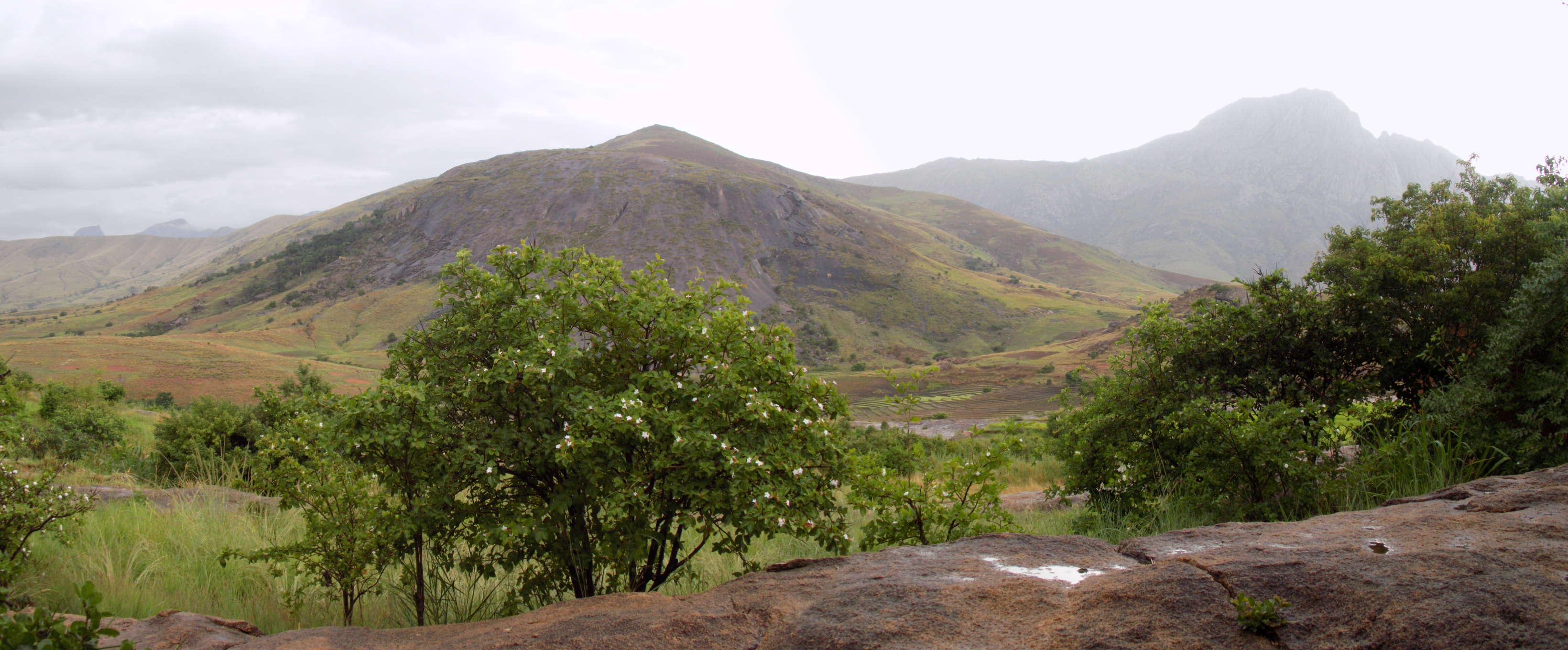
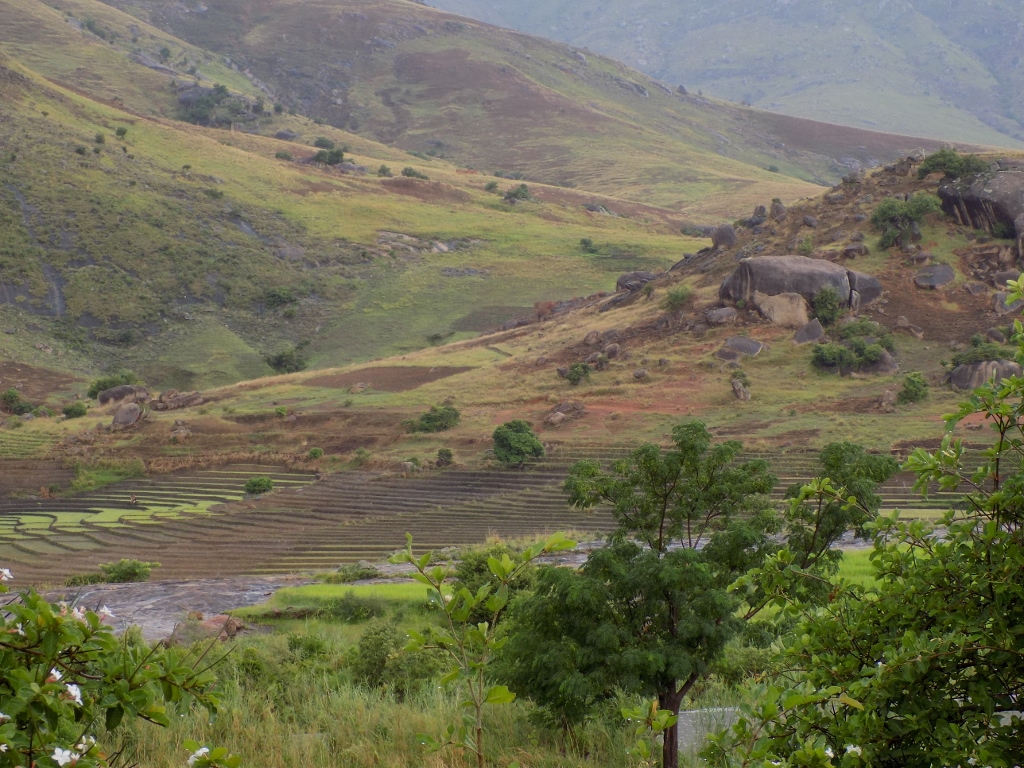 Surroundings of our “camp”
Surroundings of our “camp”
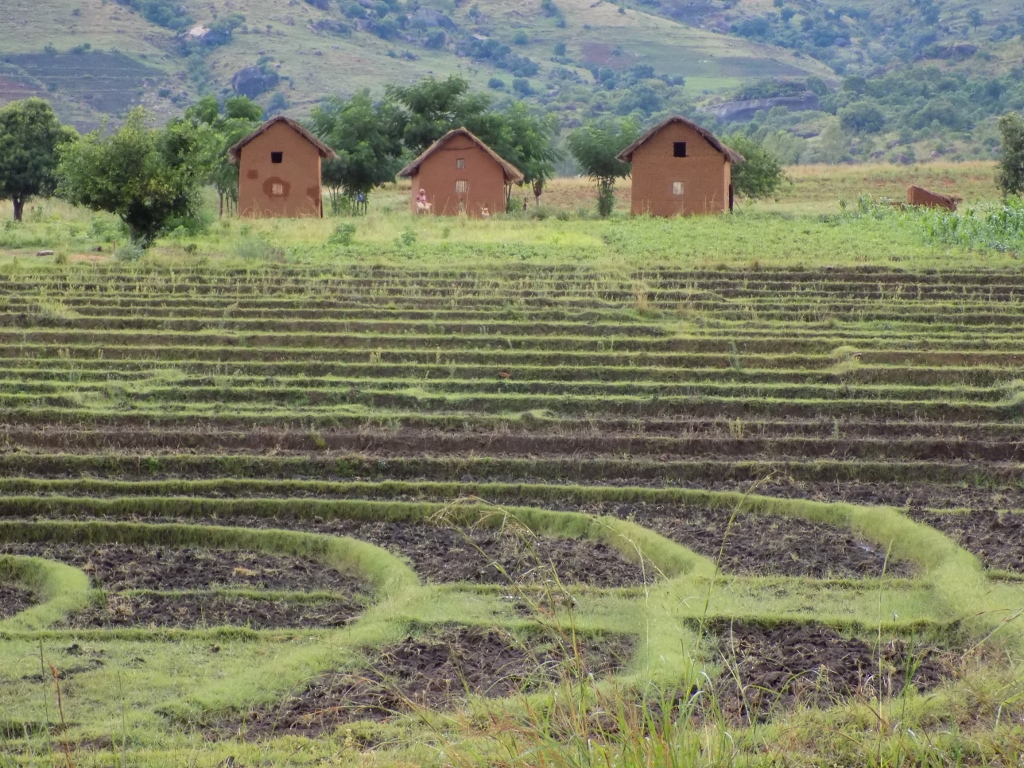 Surroundings of our “camp”
Surroundings of our “camp”


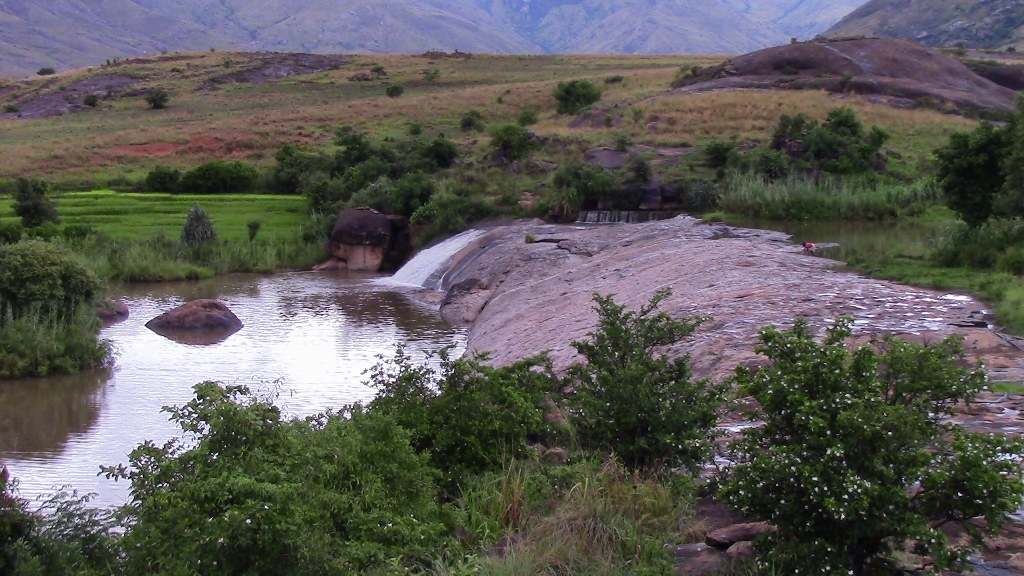 A river and a cascade near our “camp”
A river and a cascade near our “camp”
And then, at some point, I calmed down, placed my woven arm-chair a little better than its original position and started to enjoy the “picture” that was in front of me. The peace was perfect.